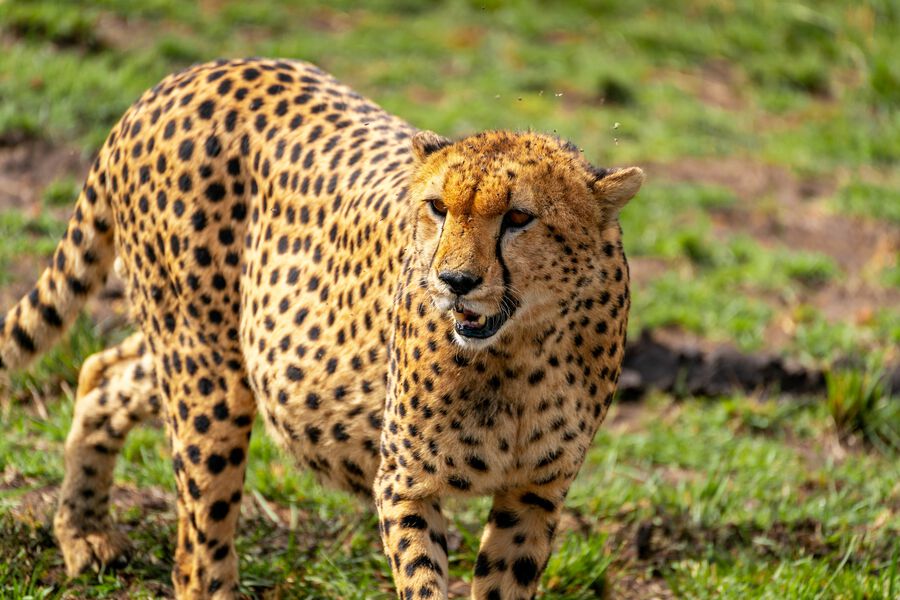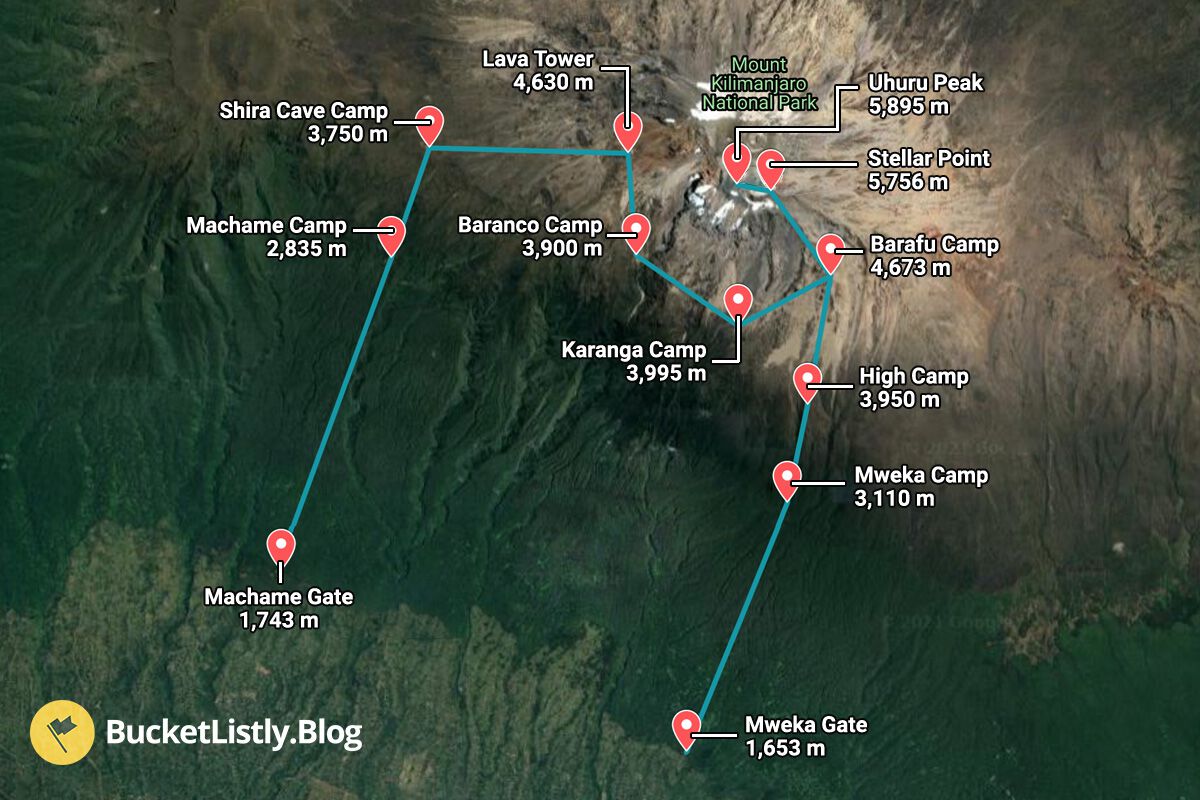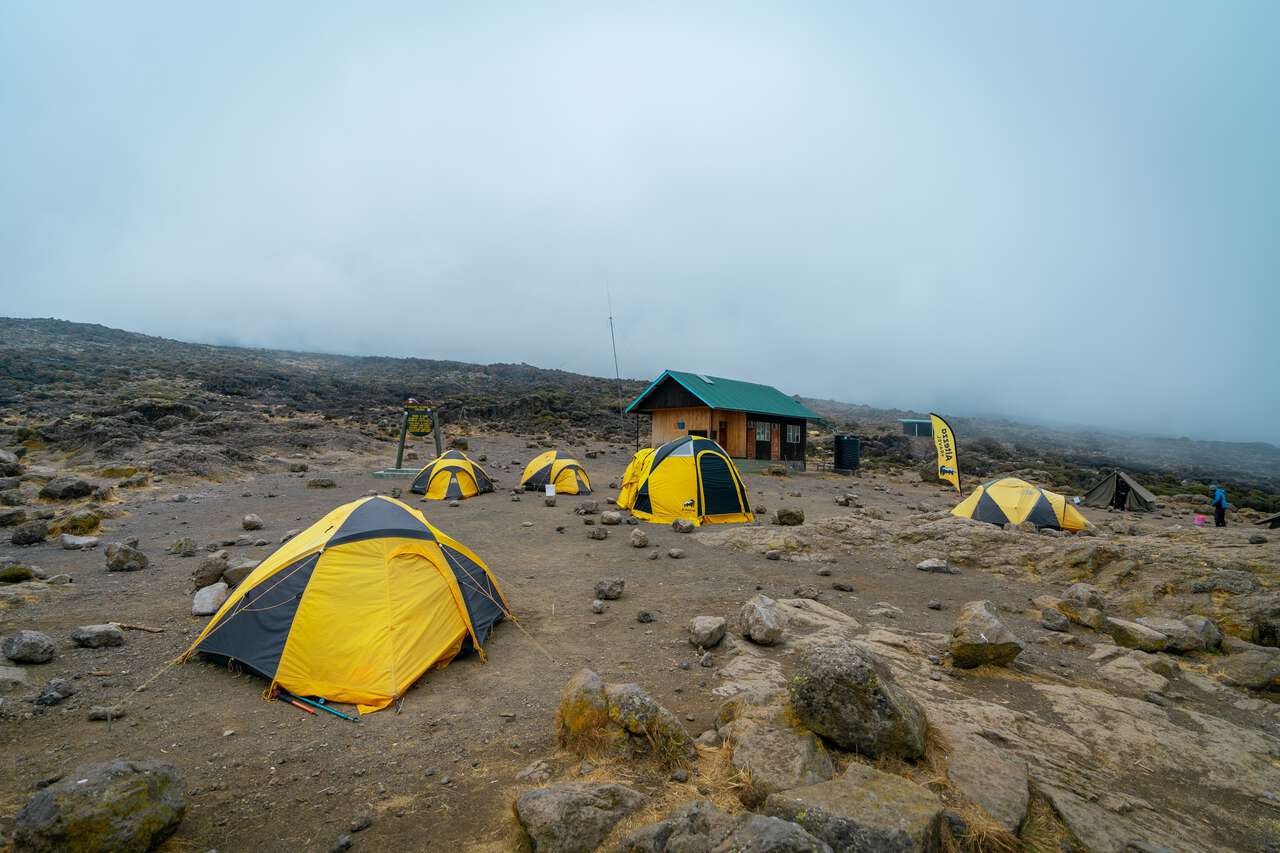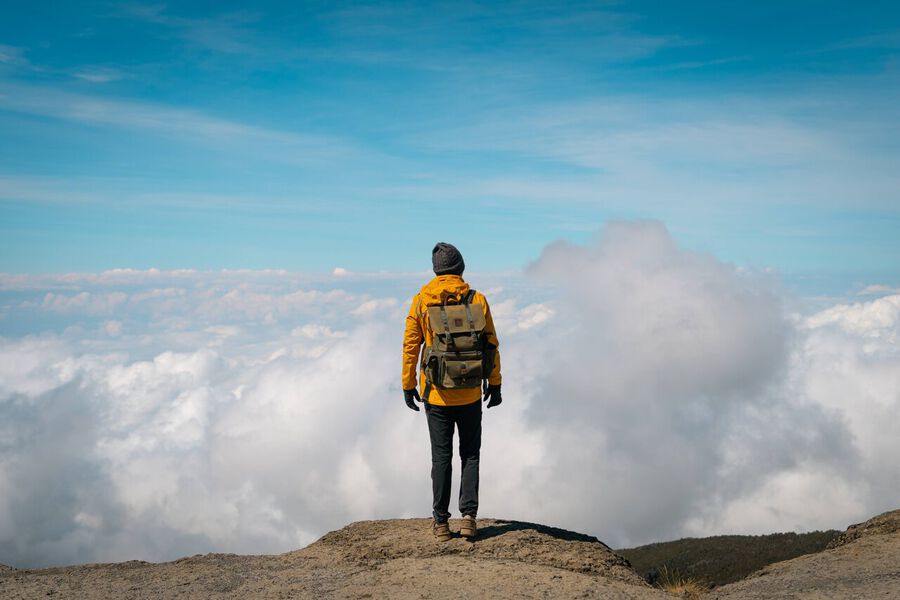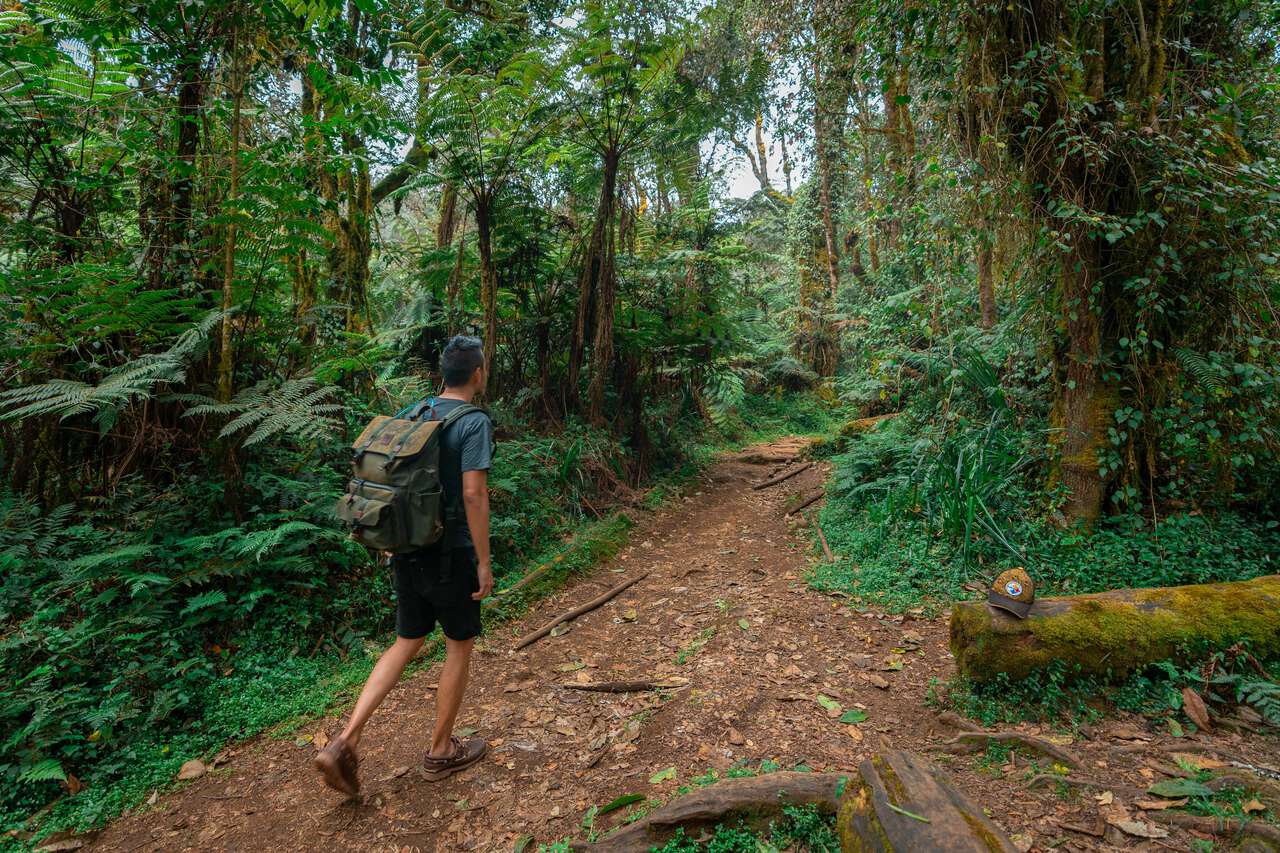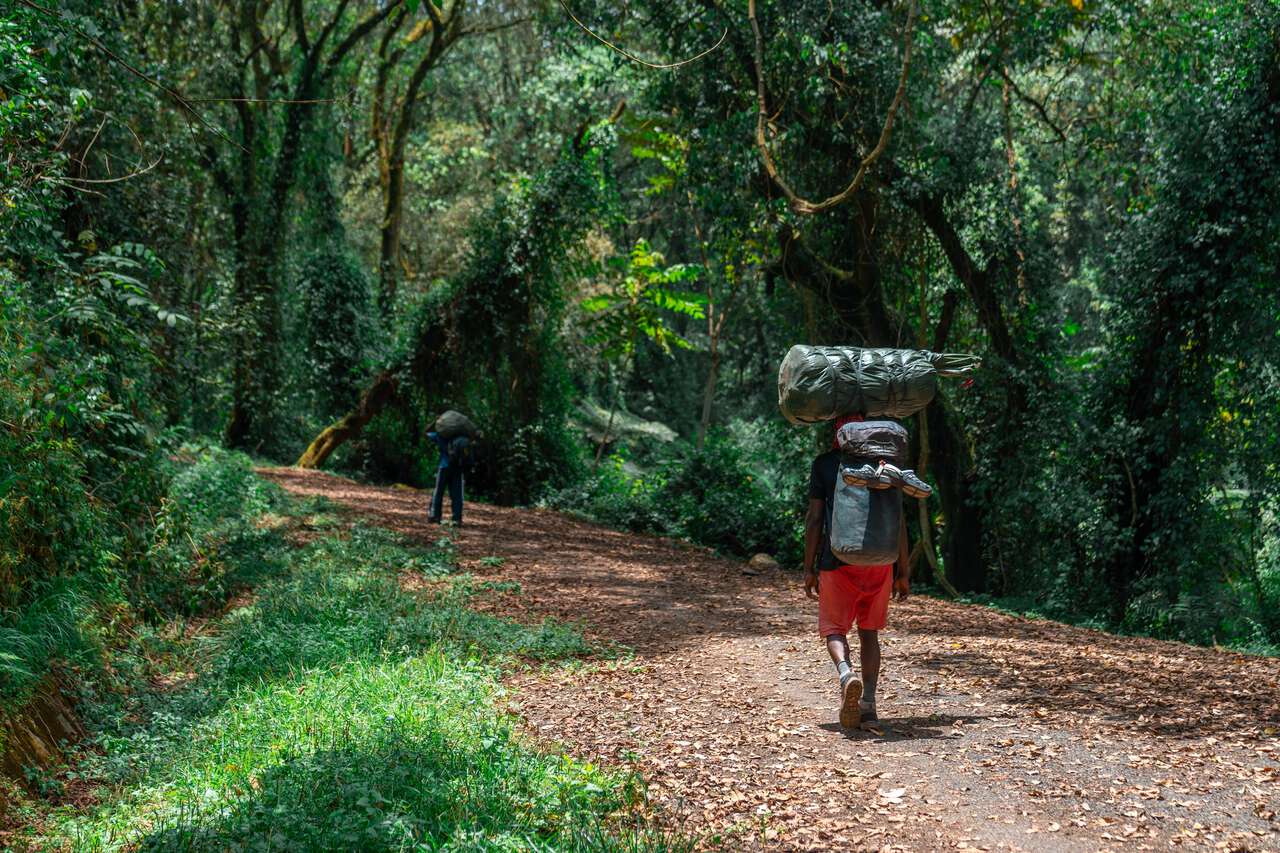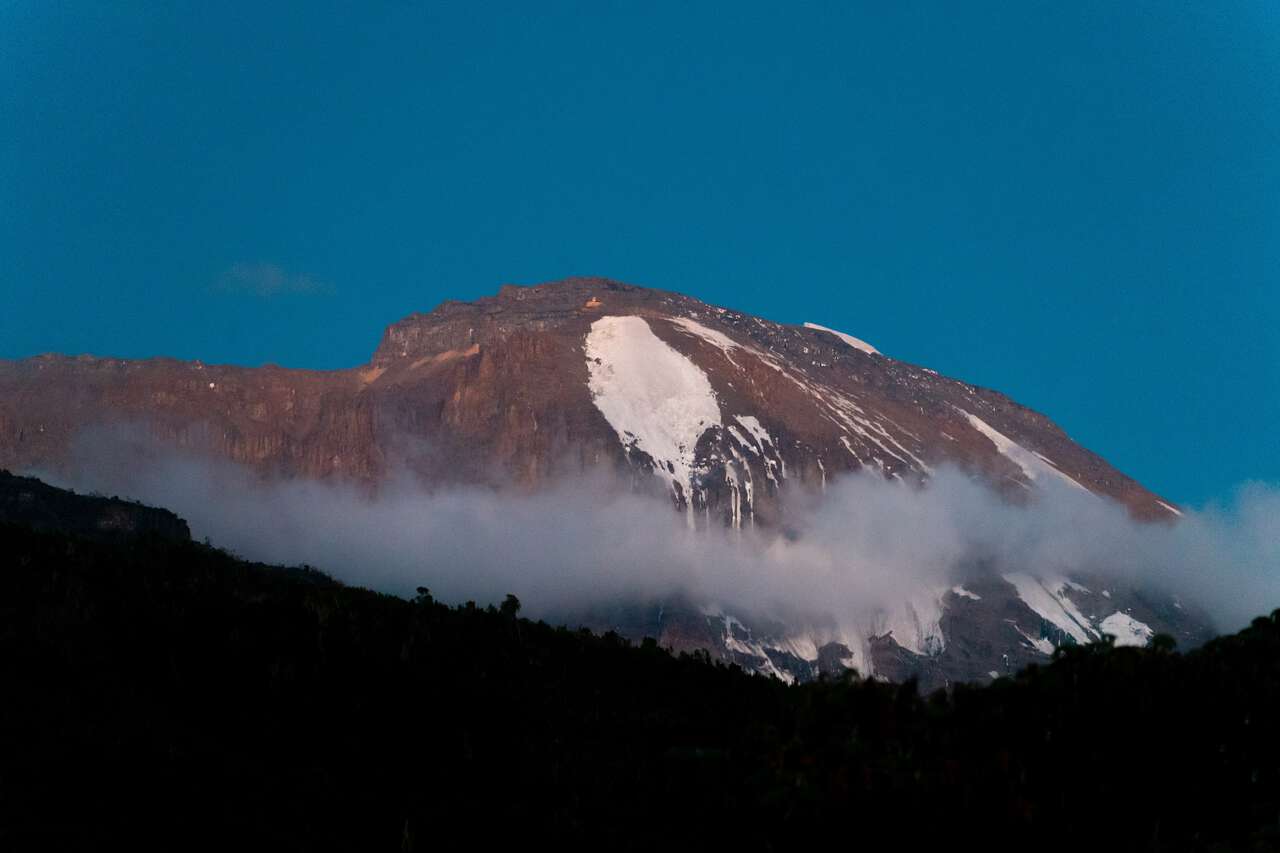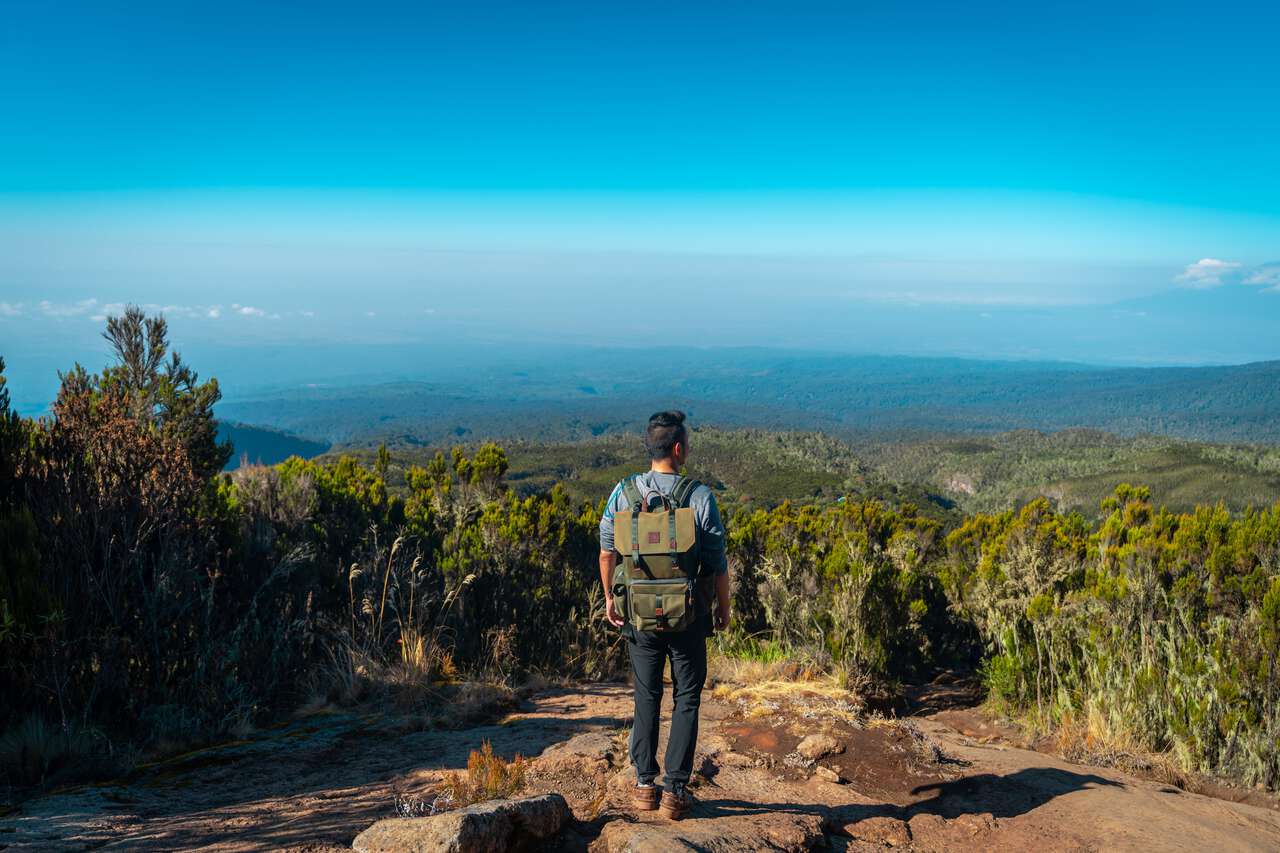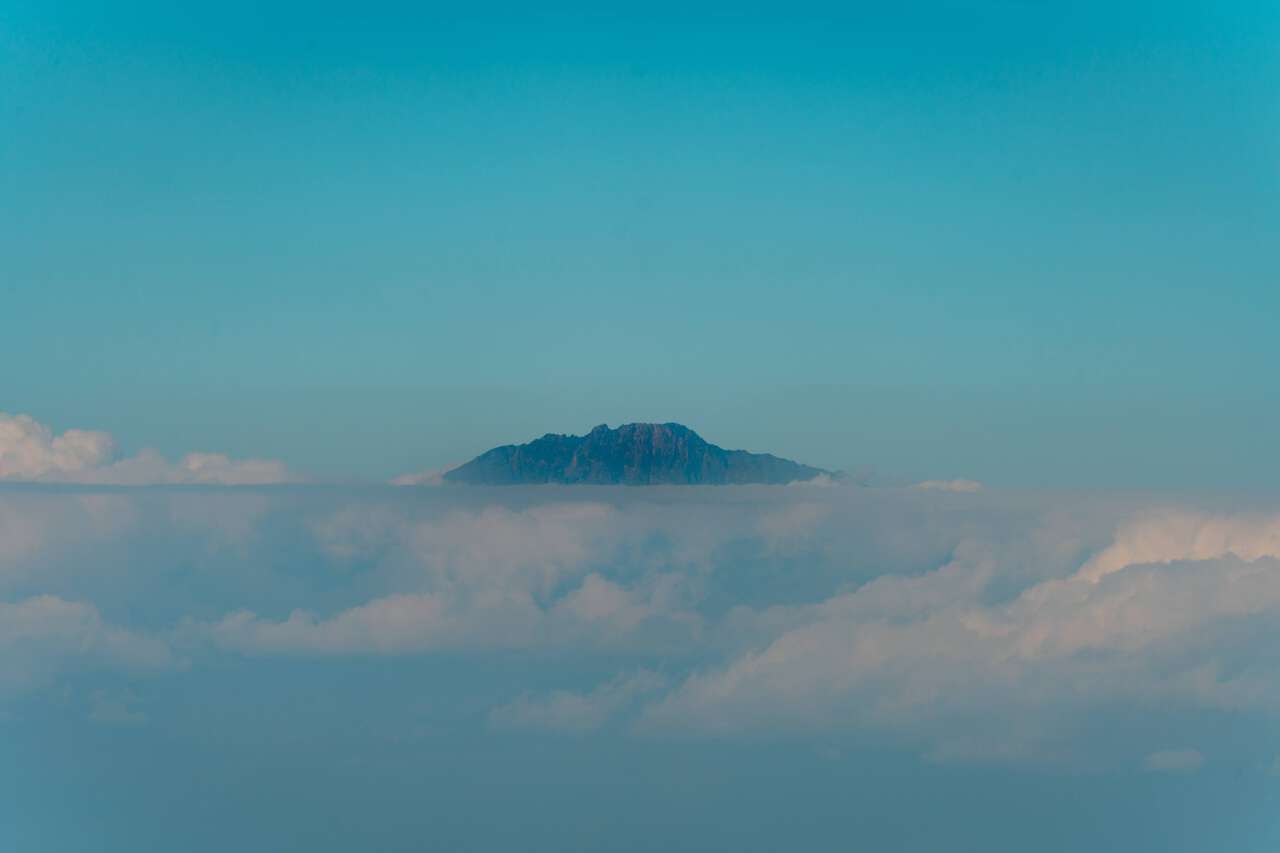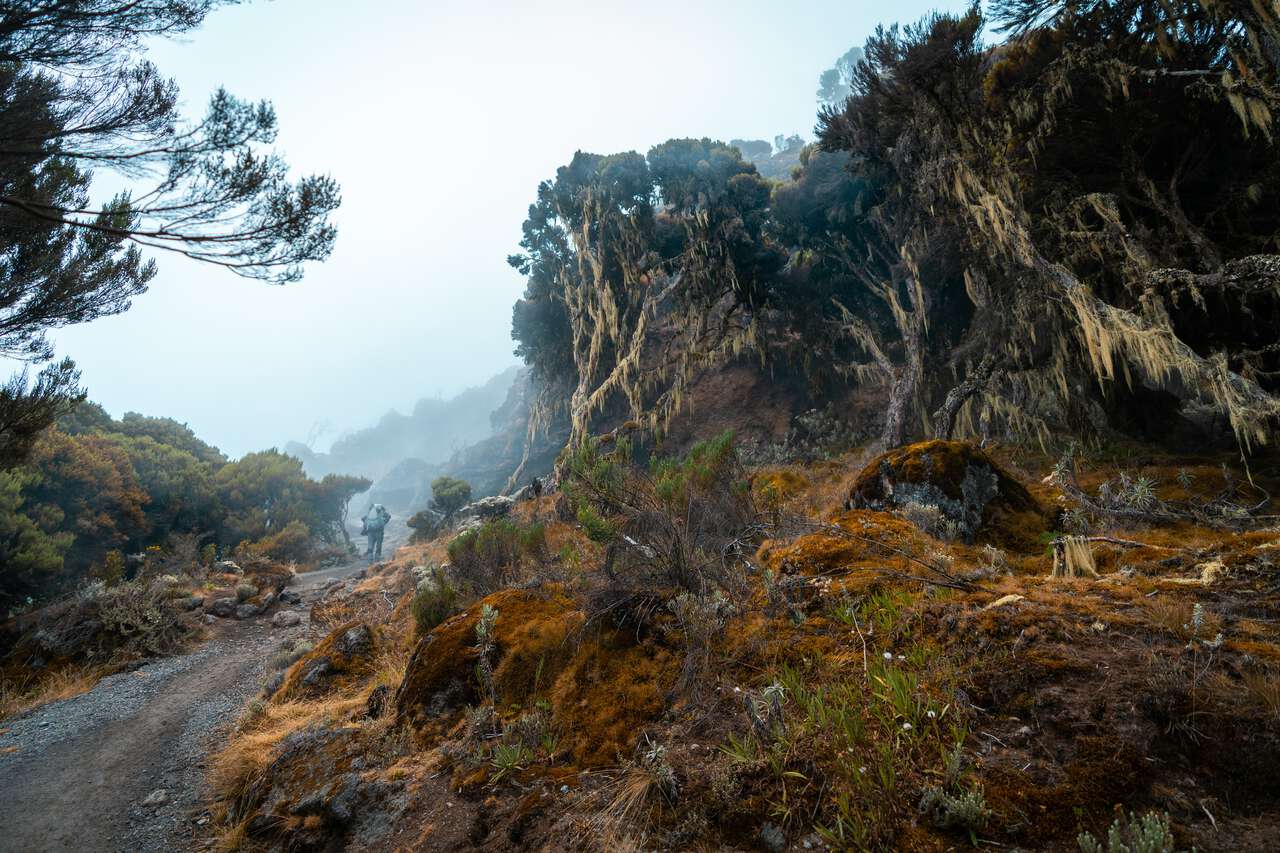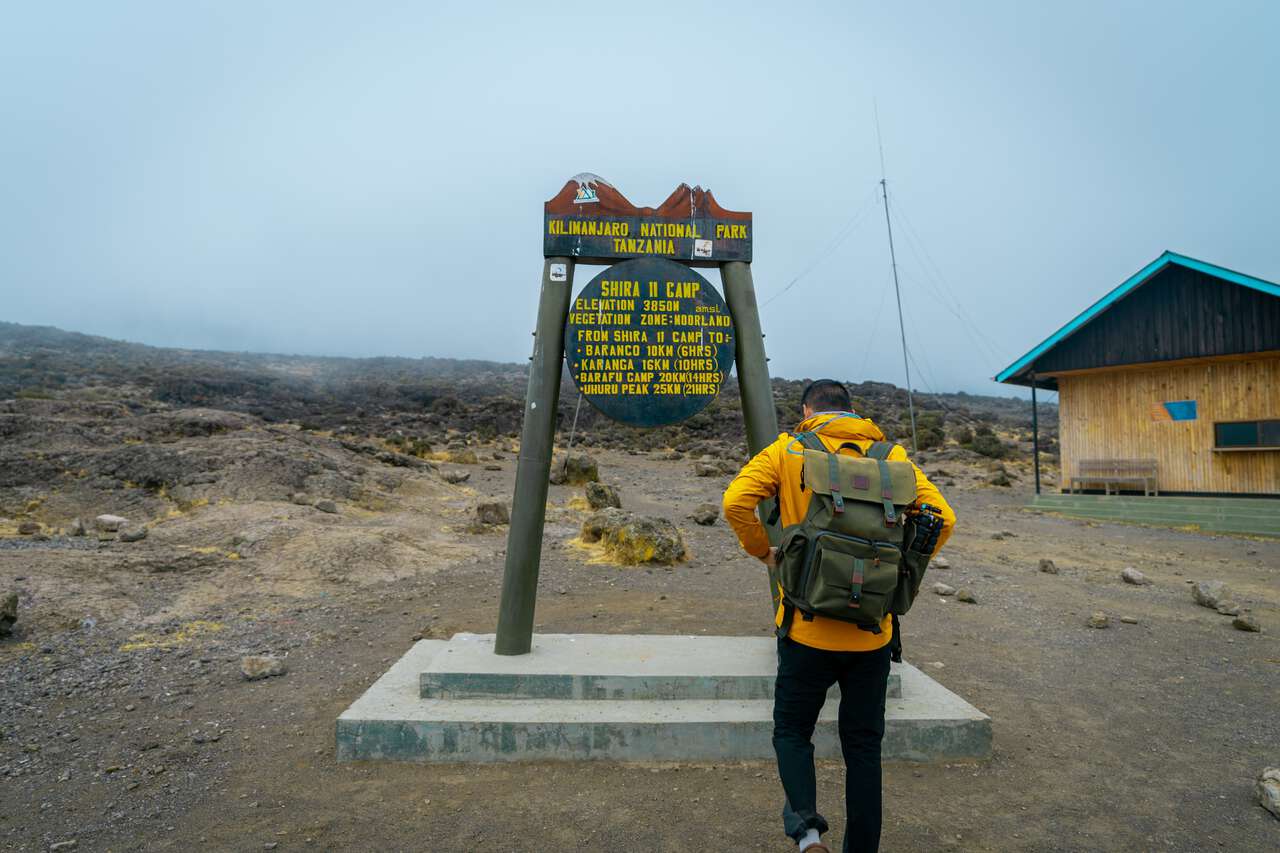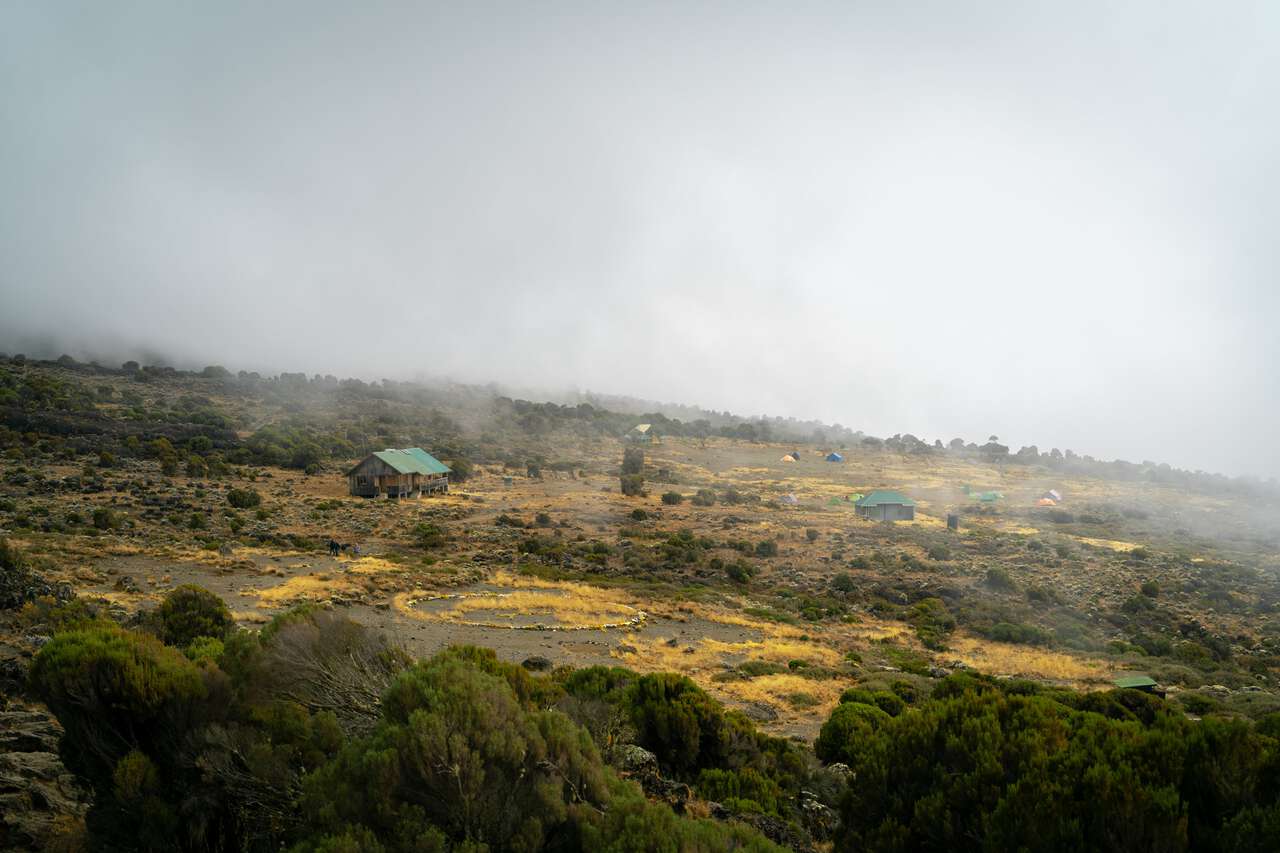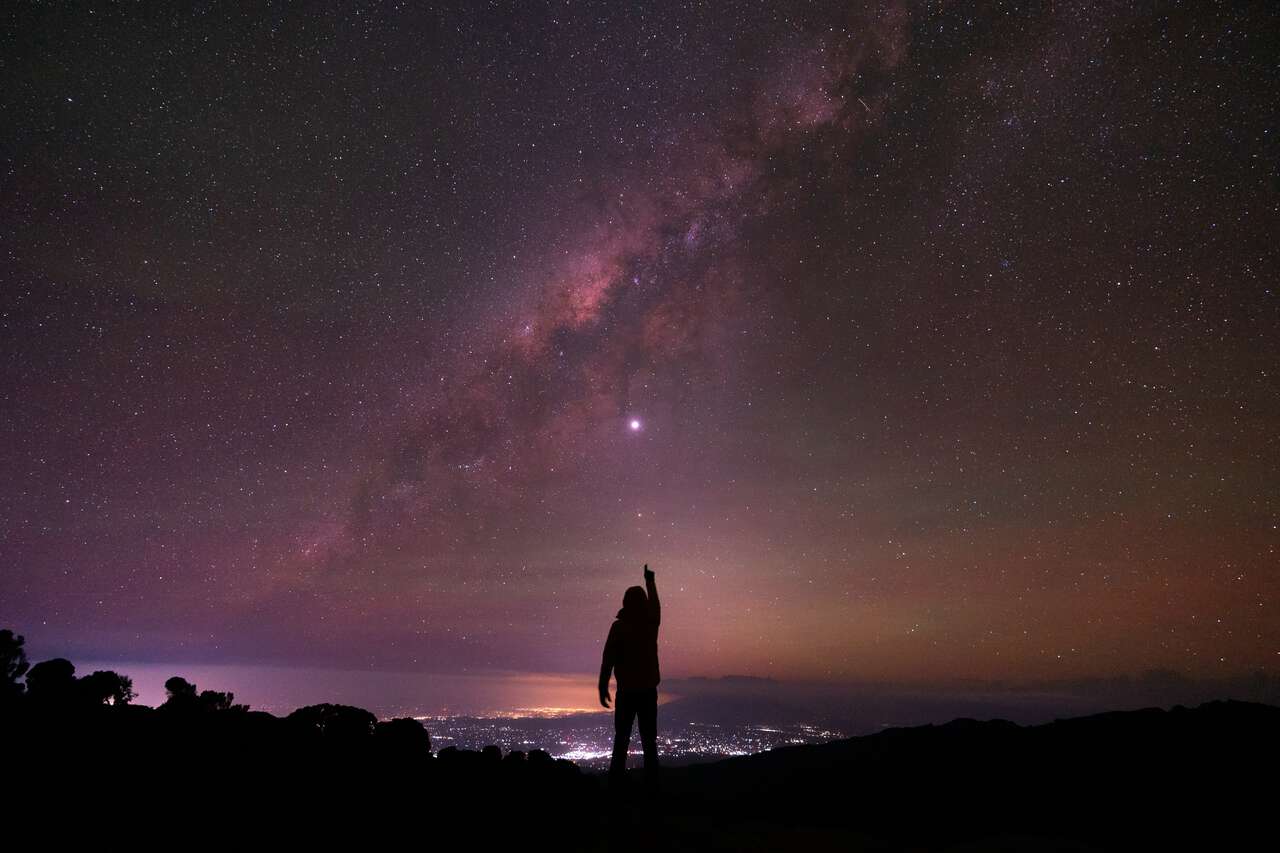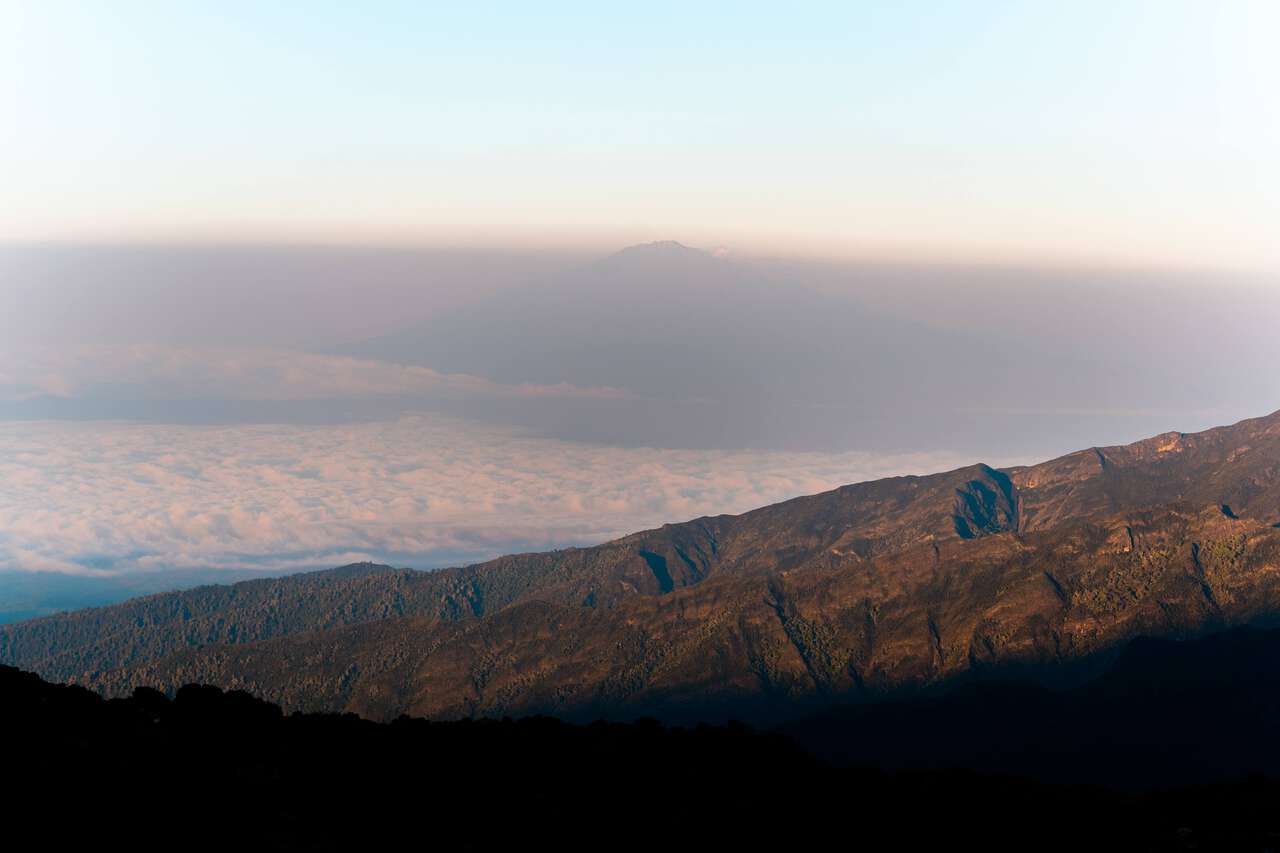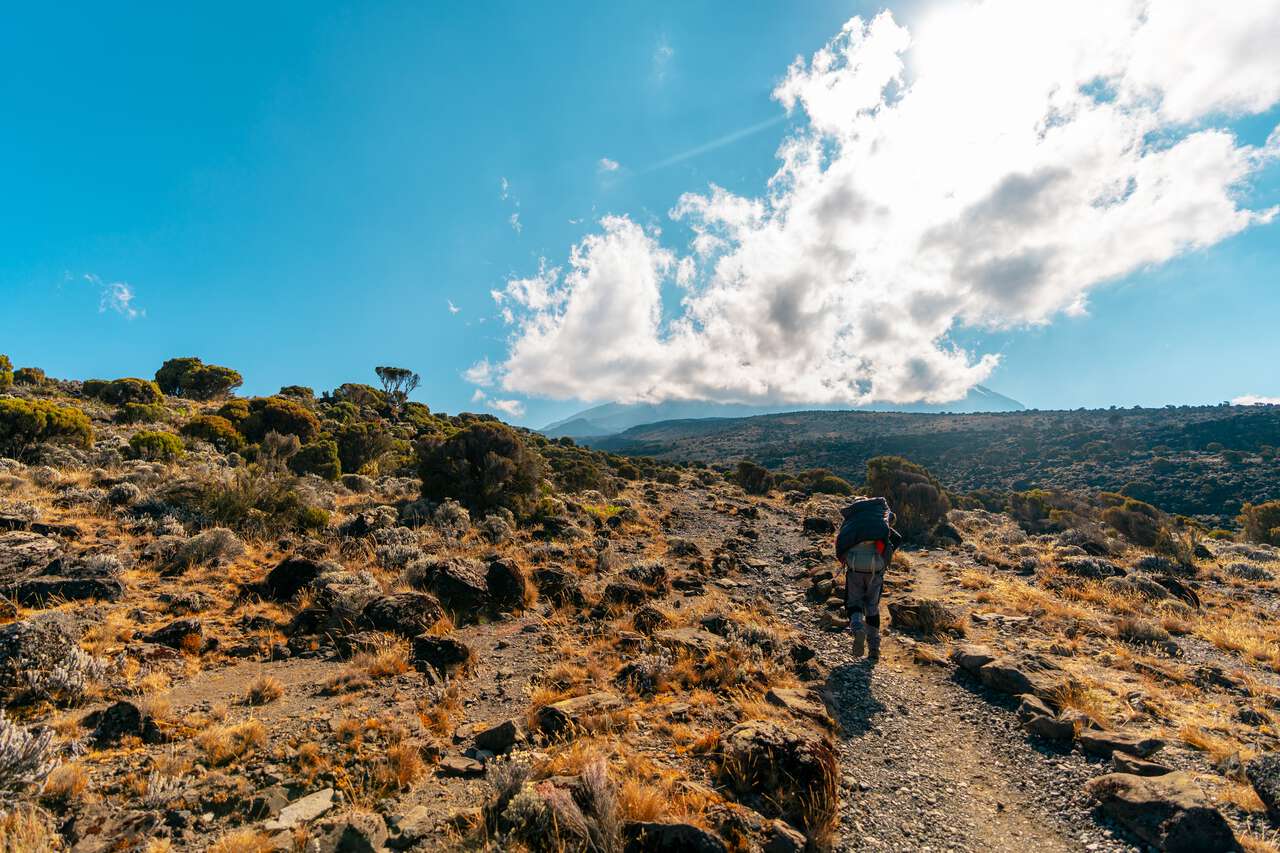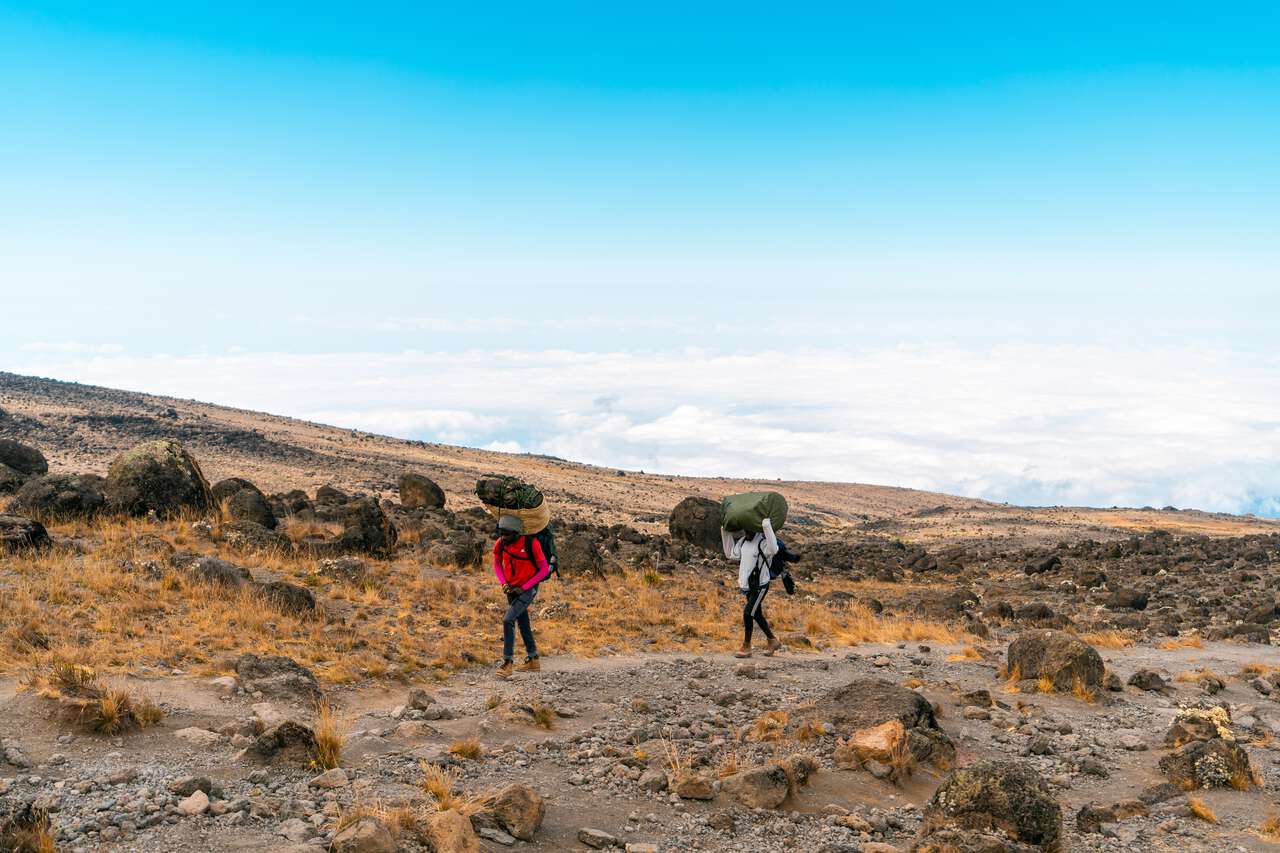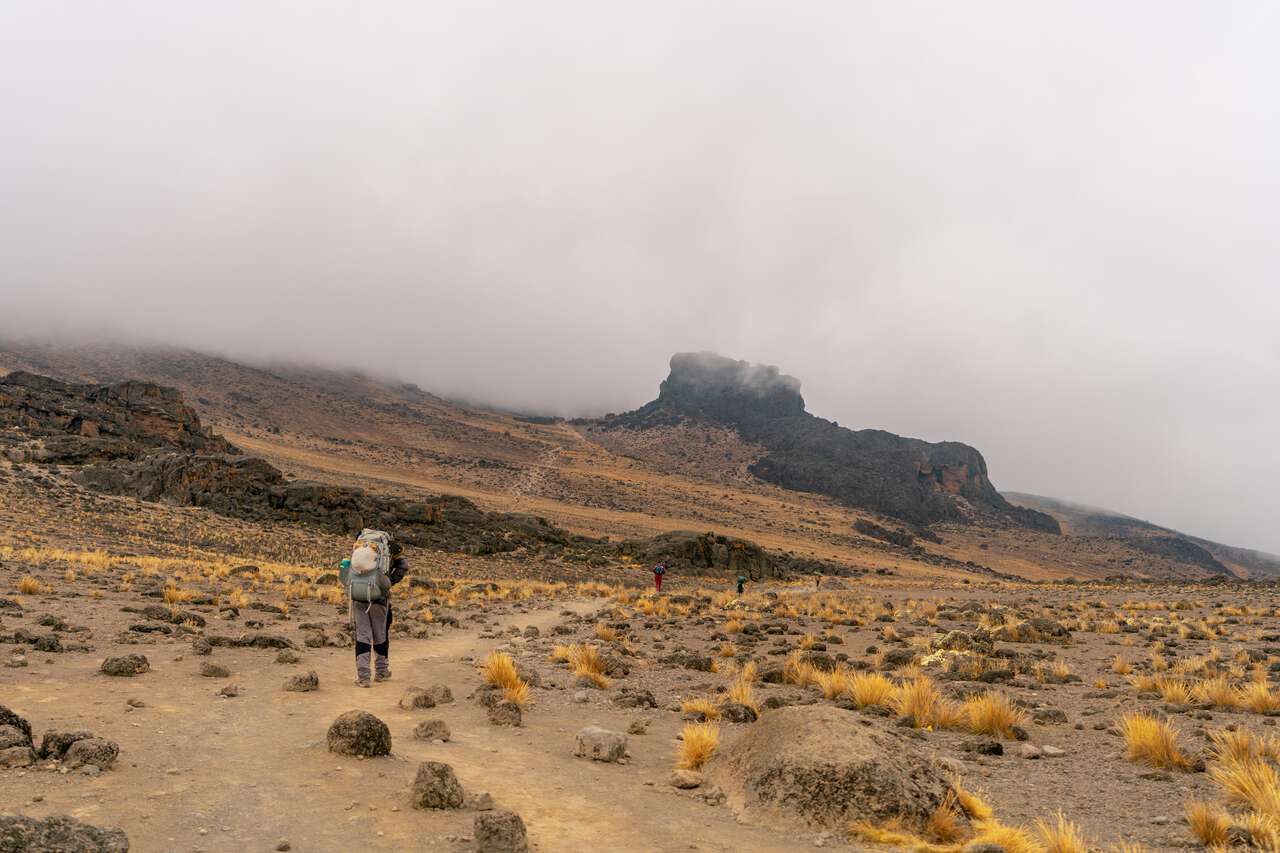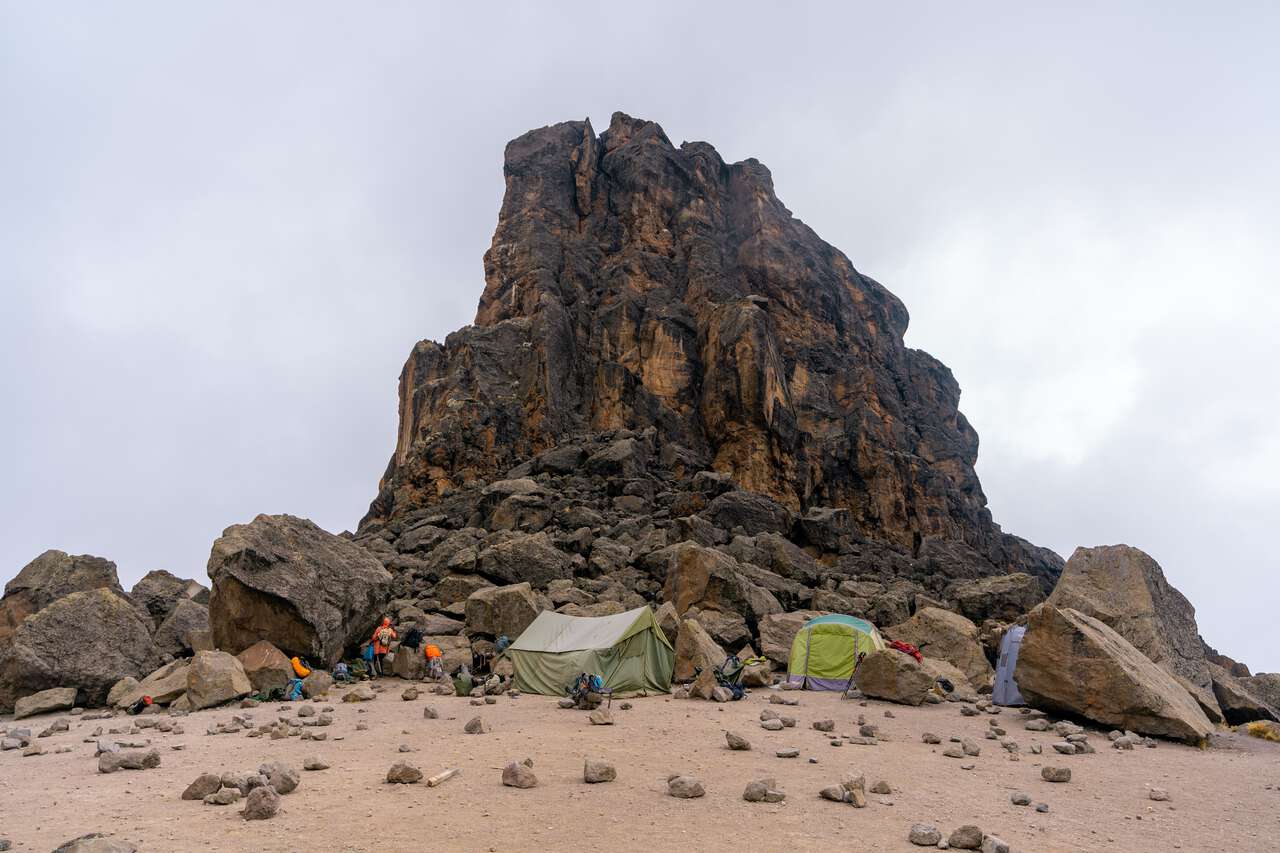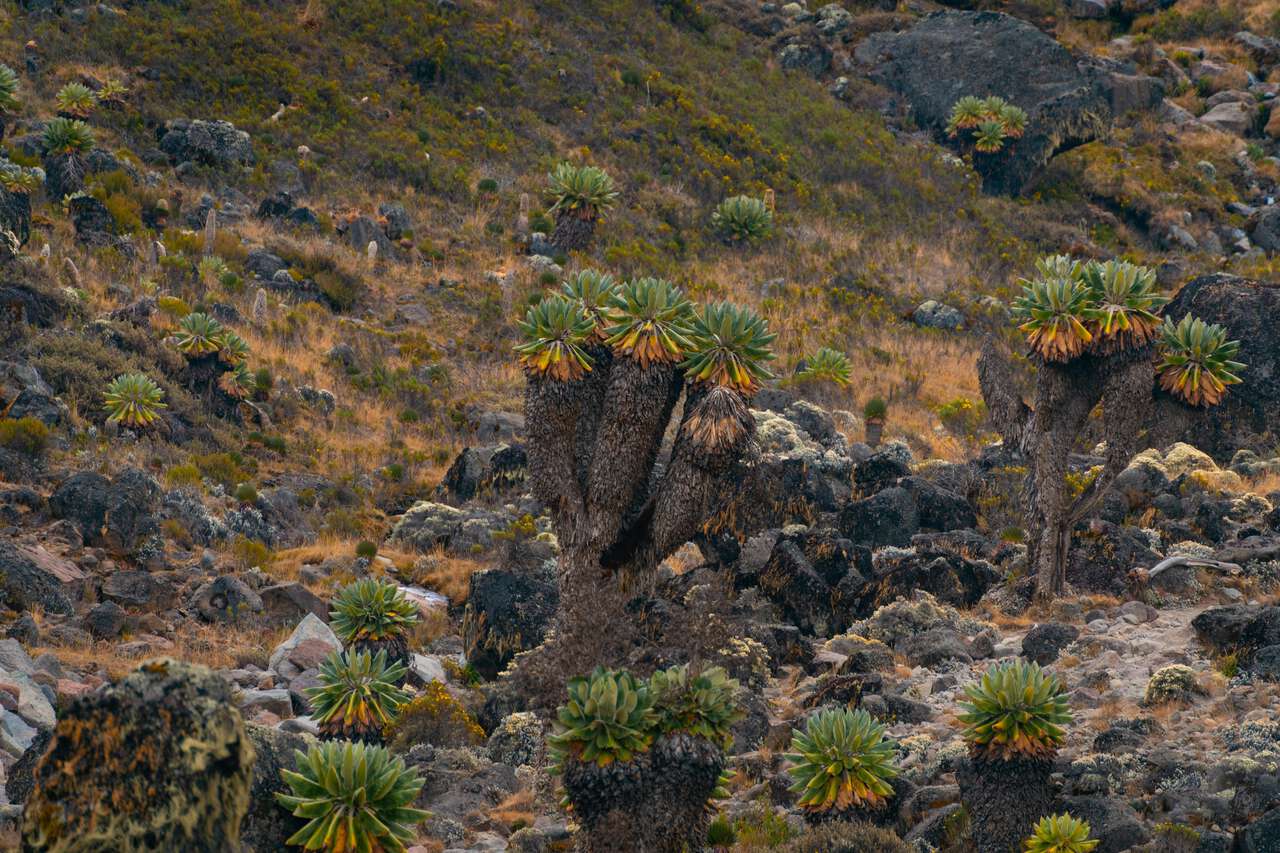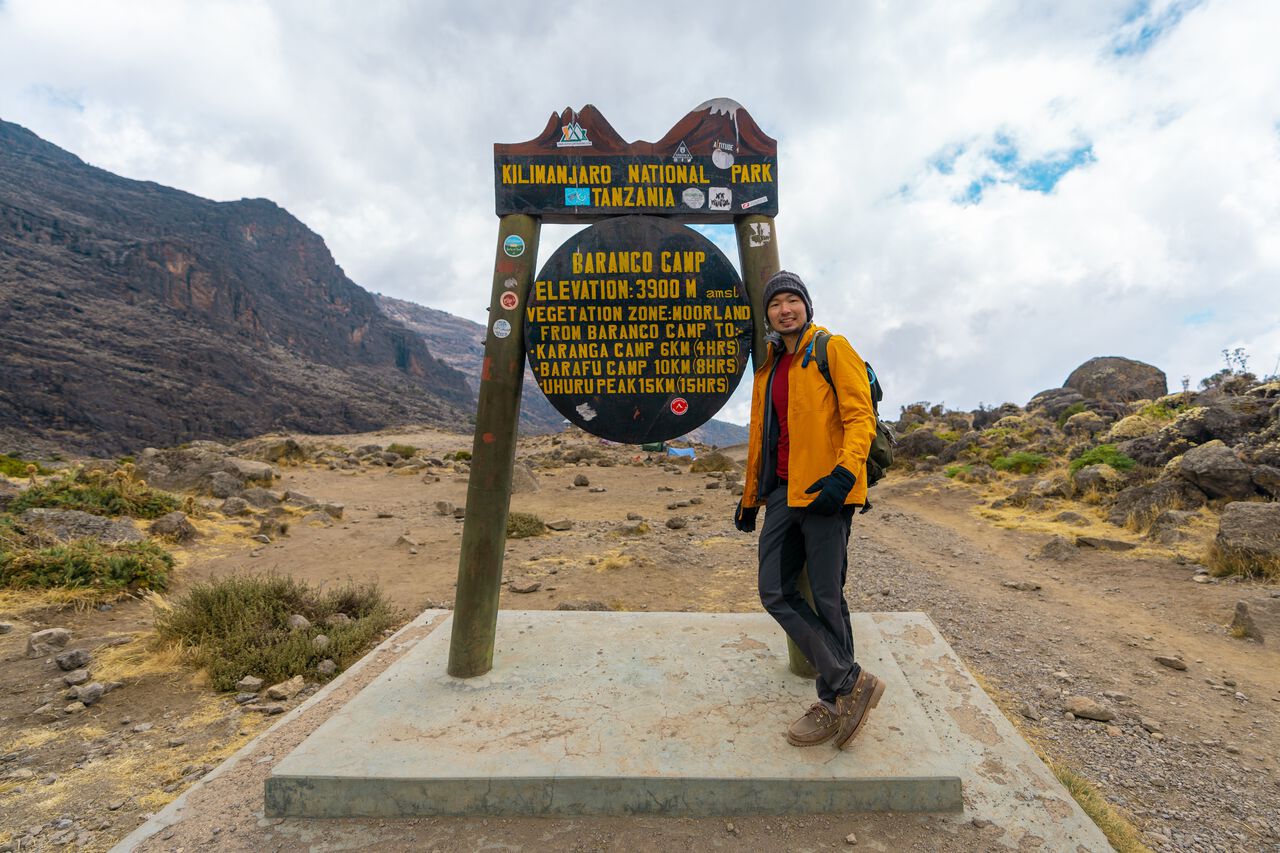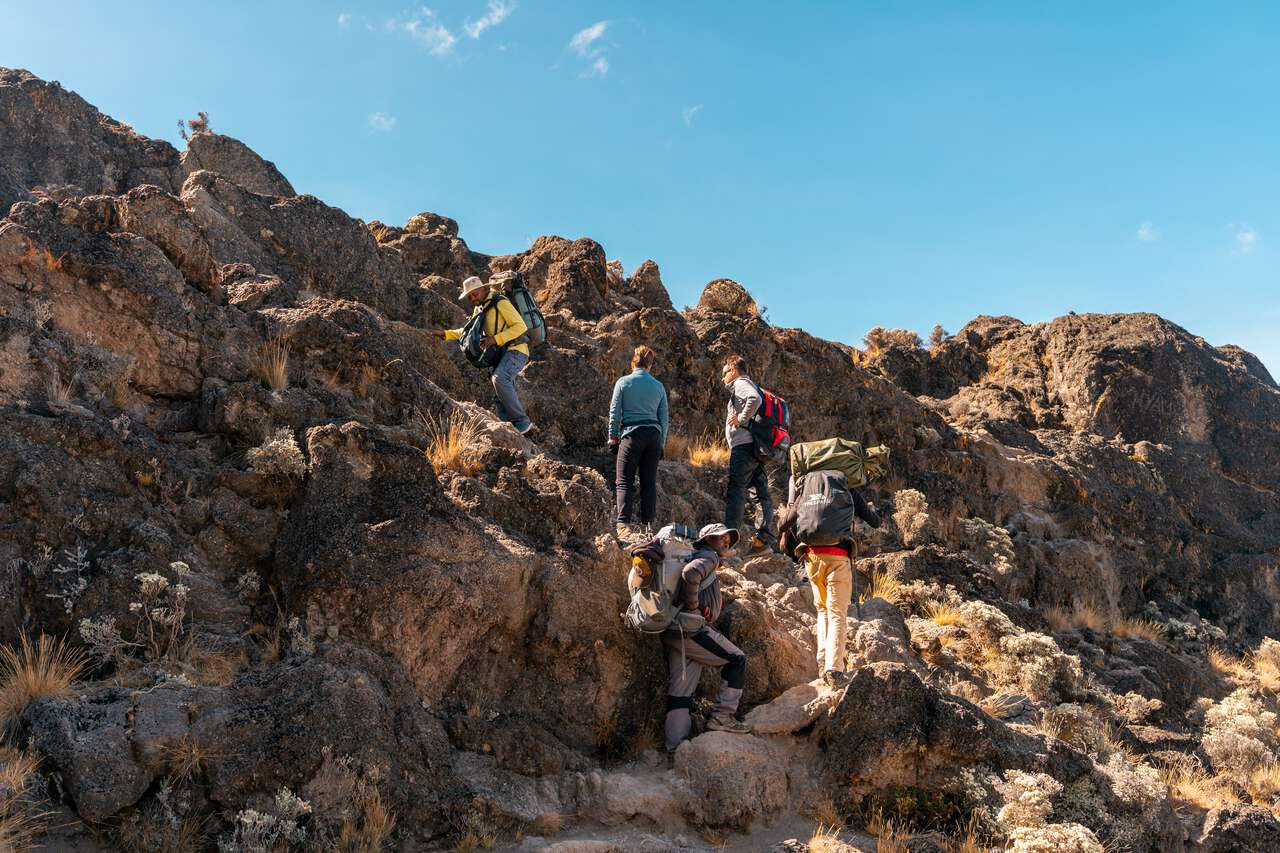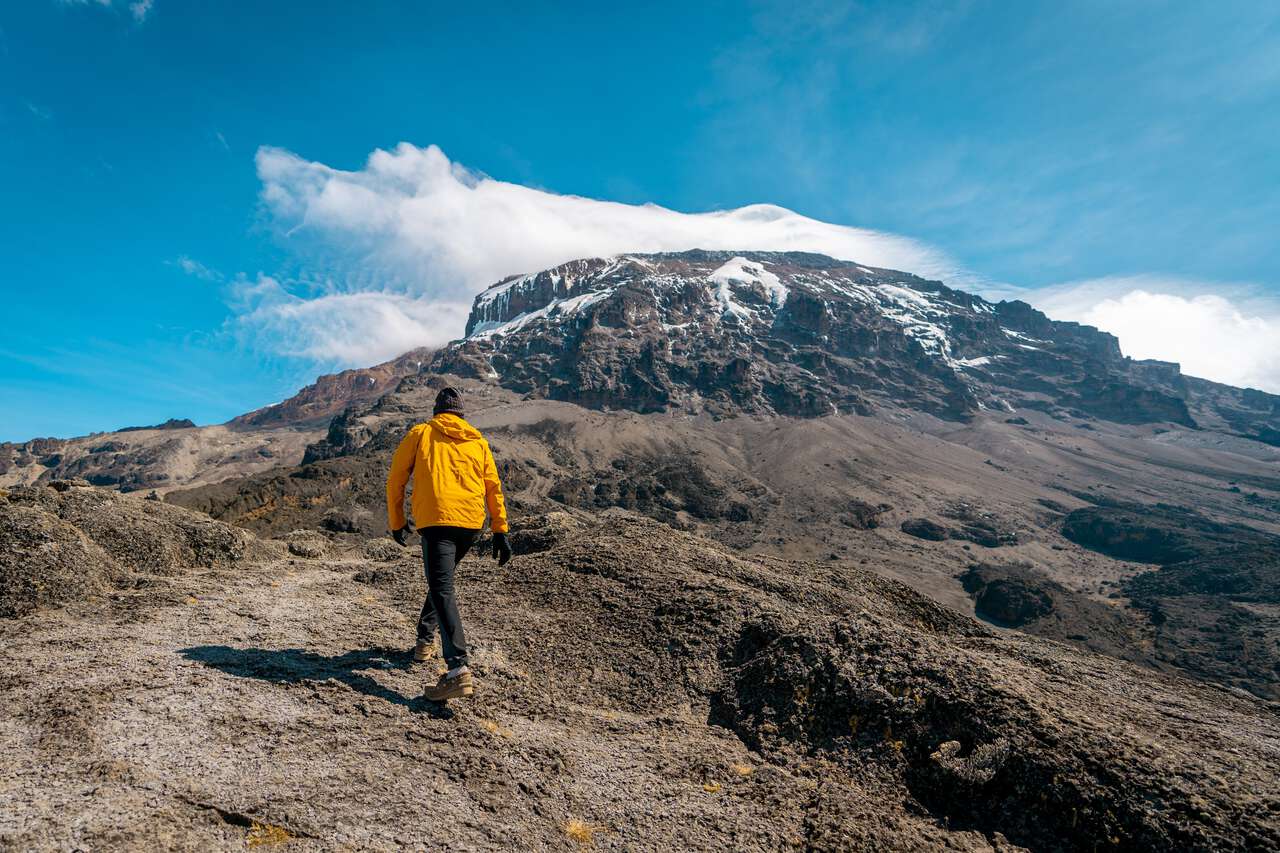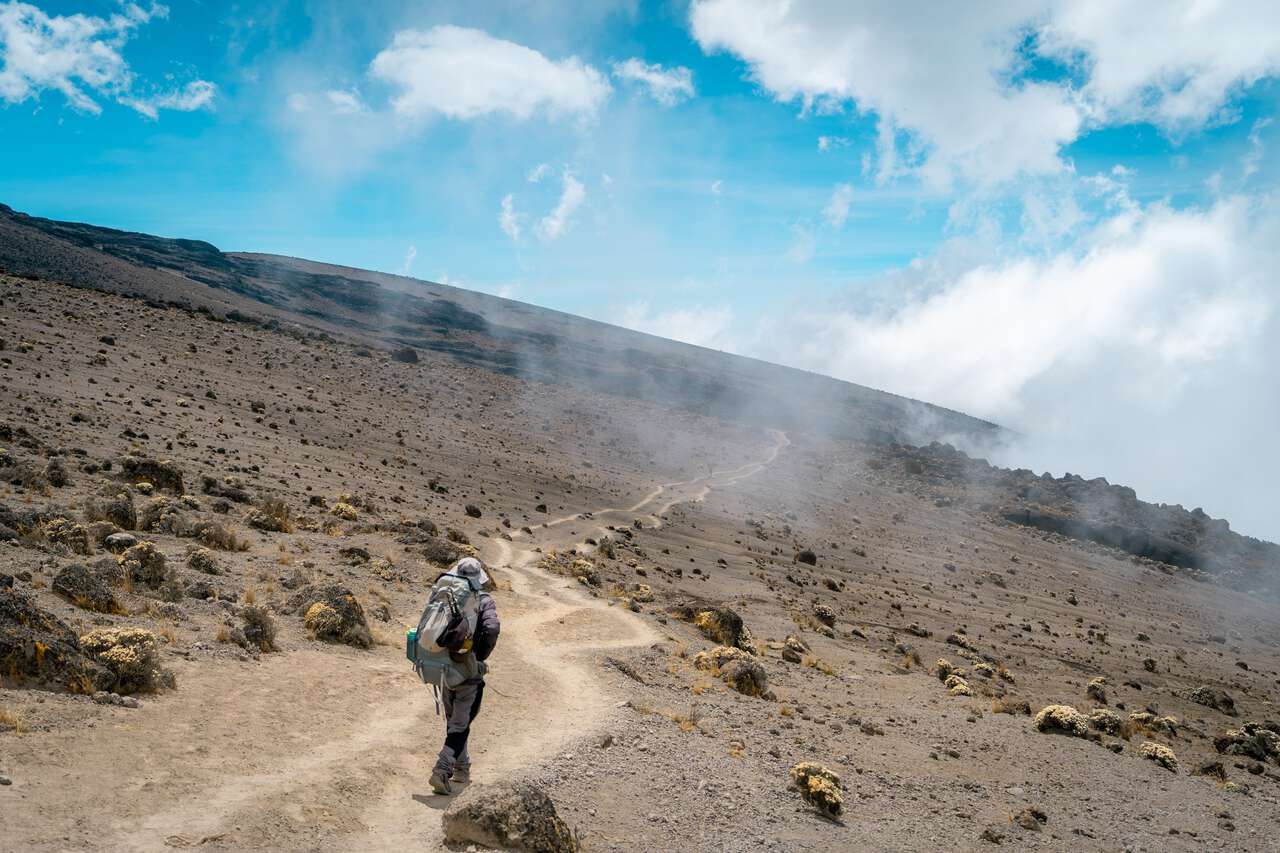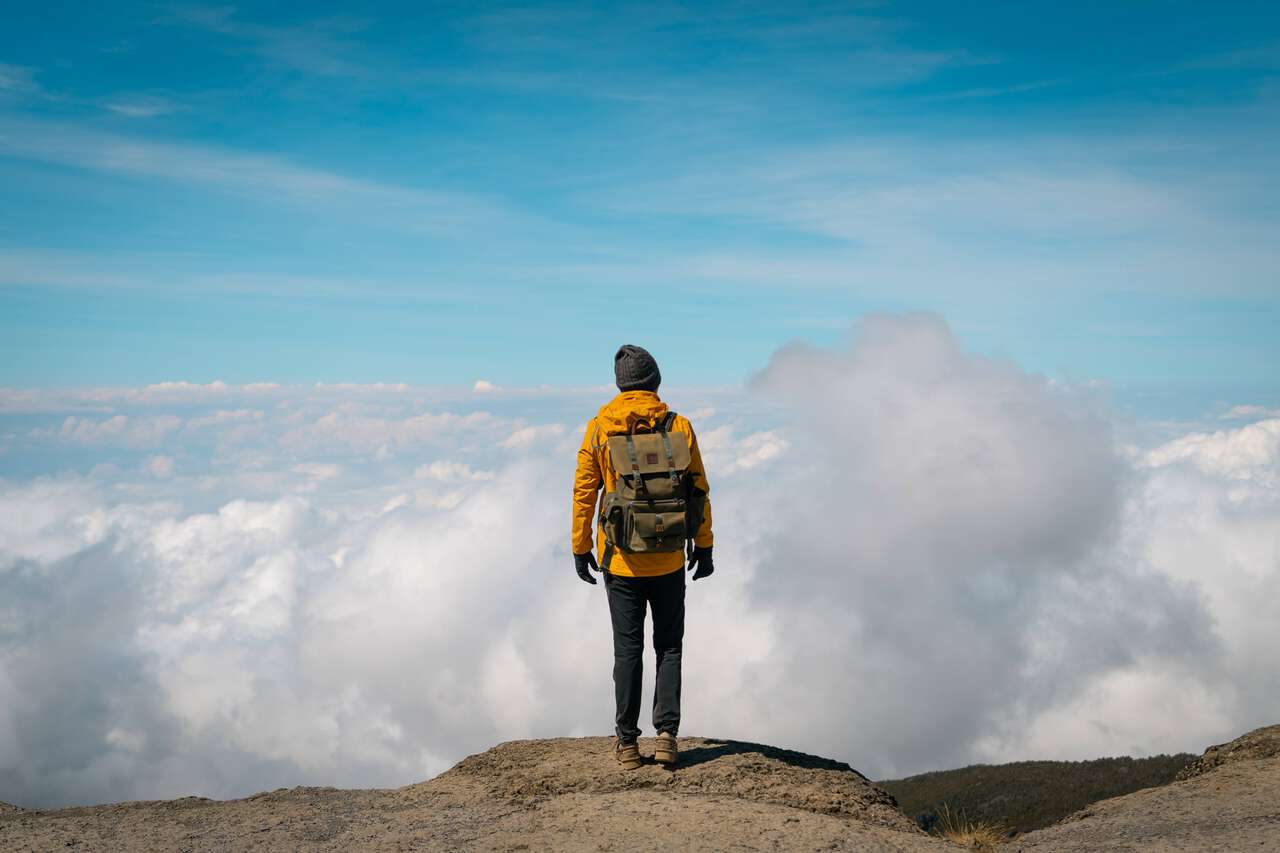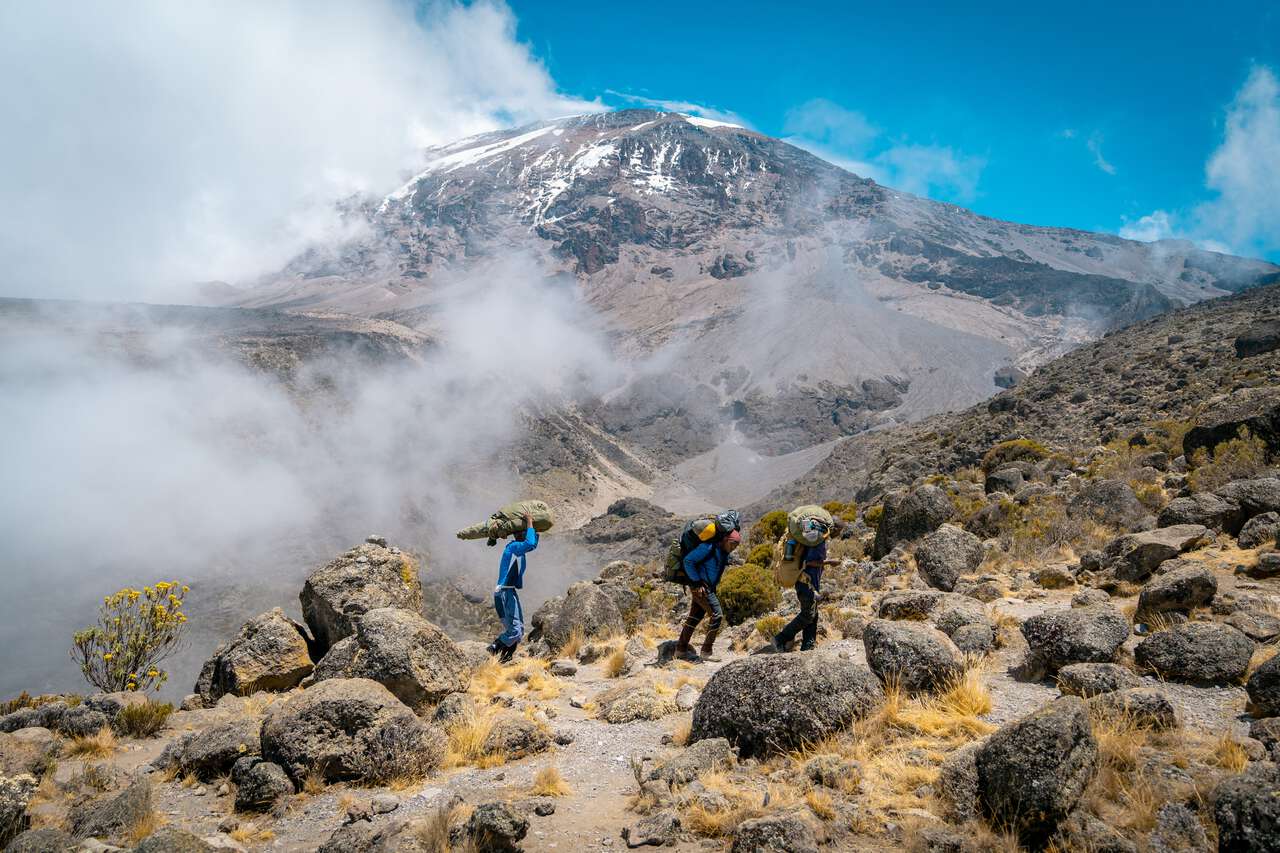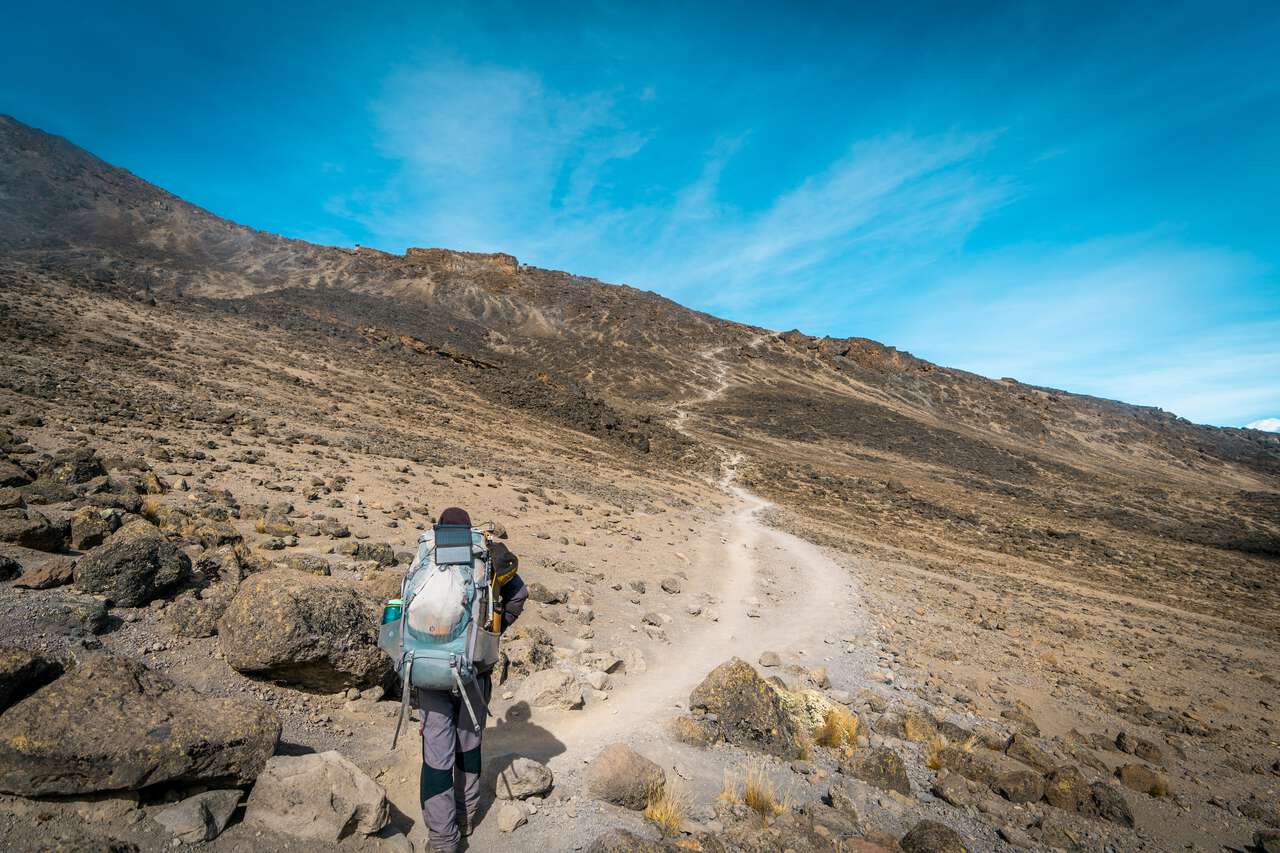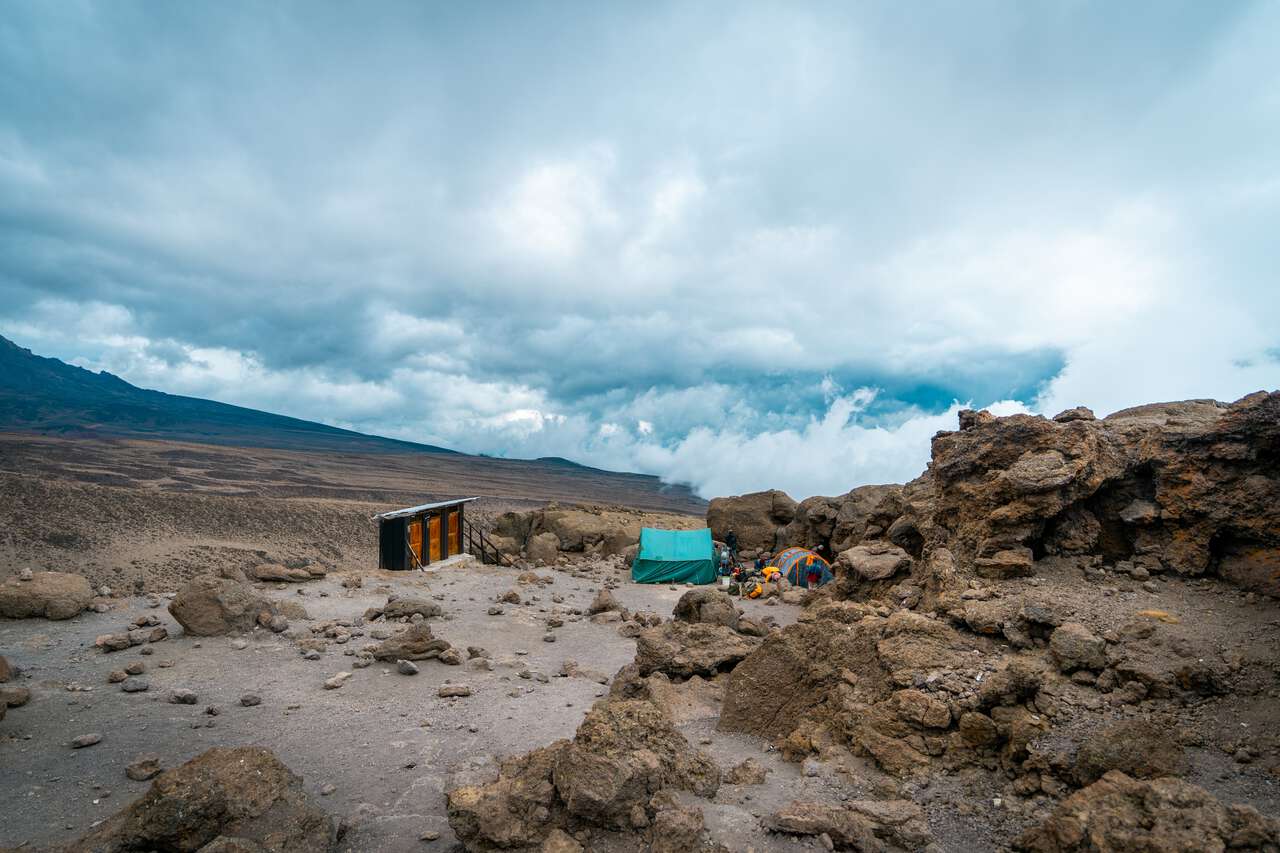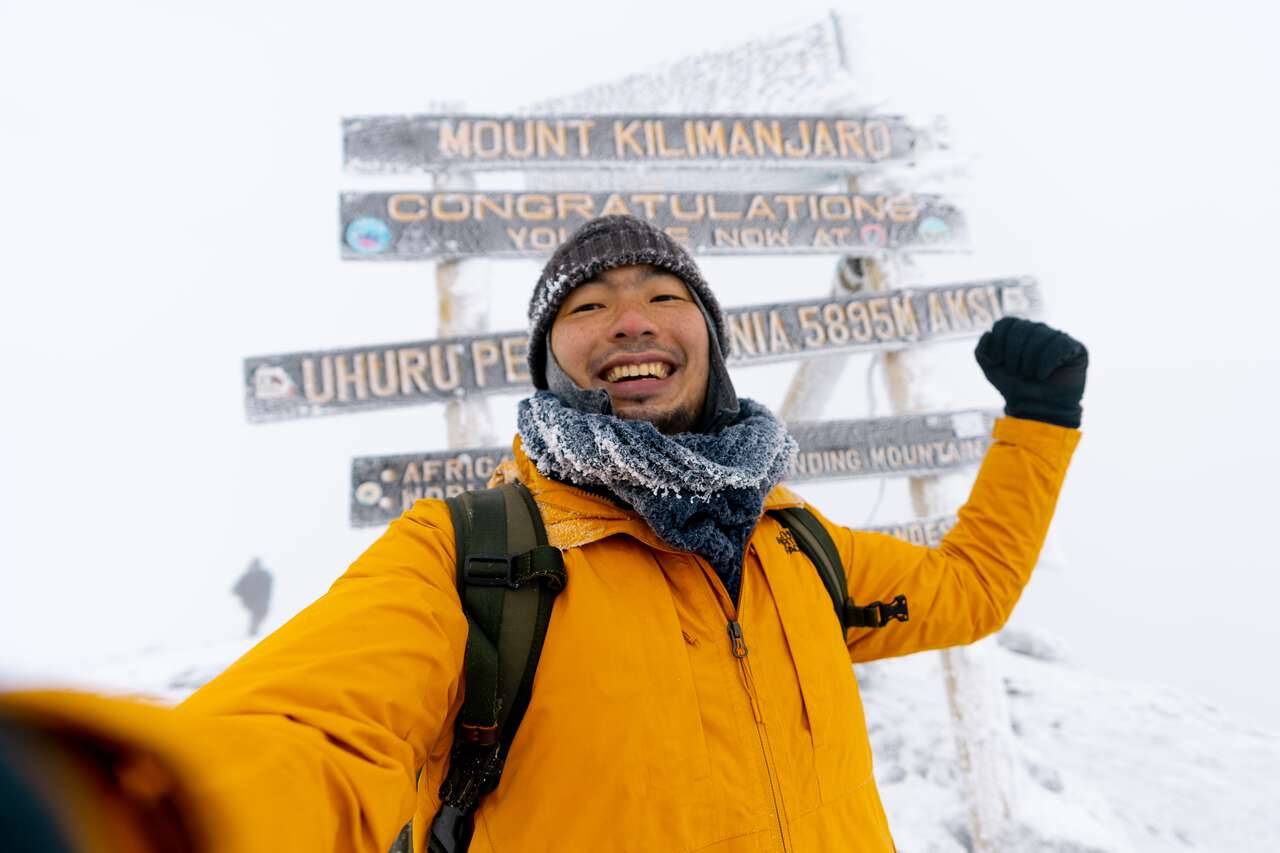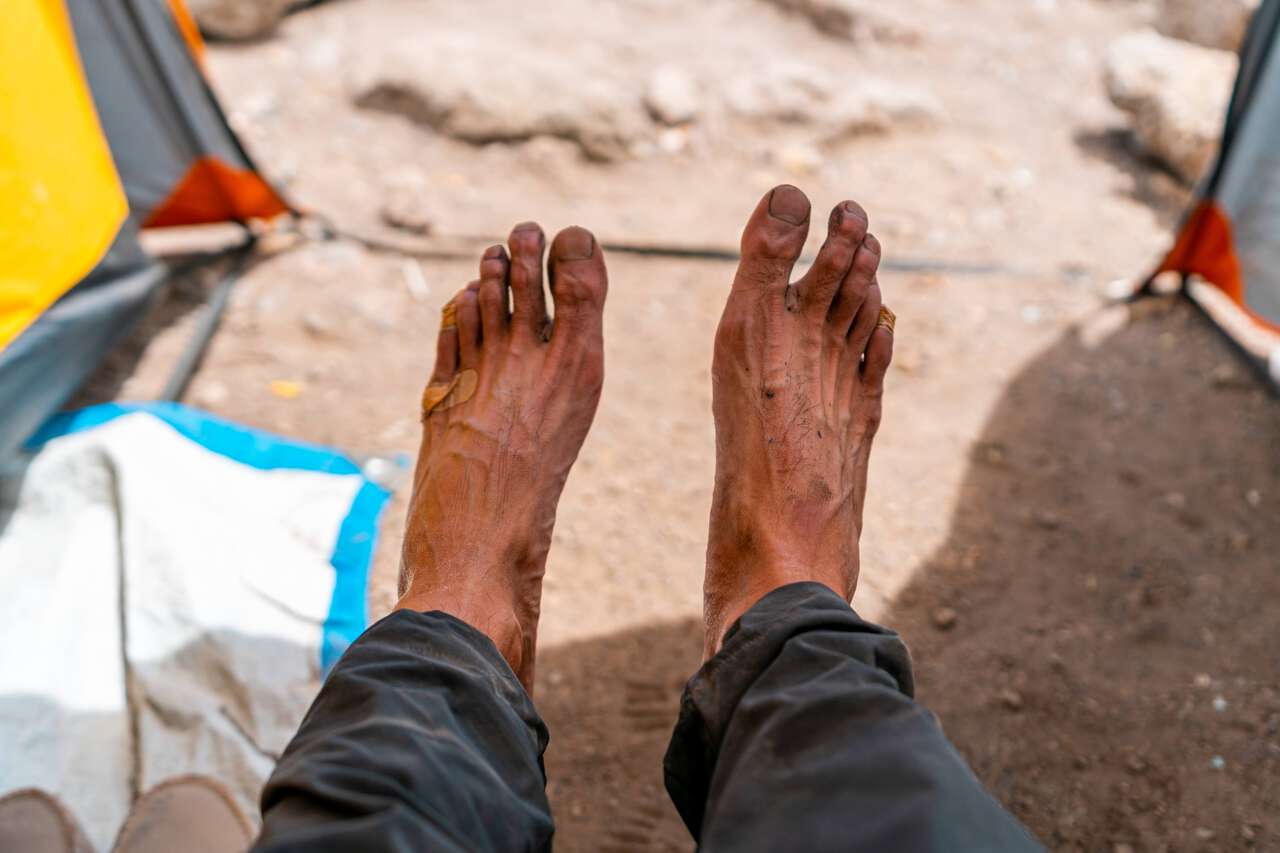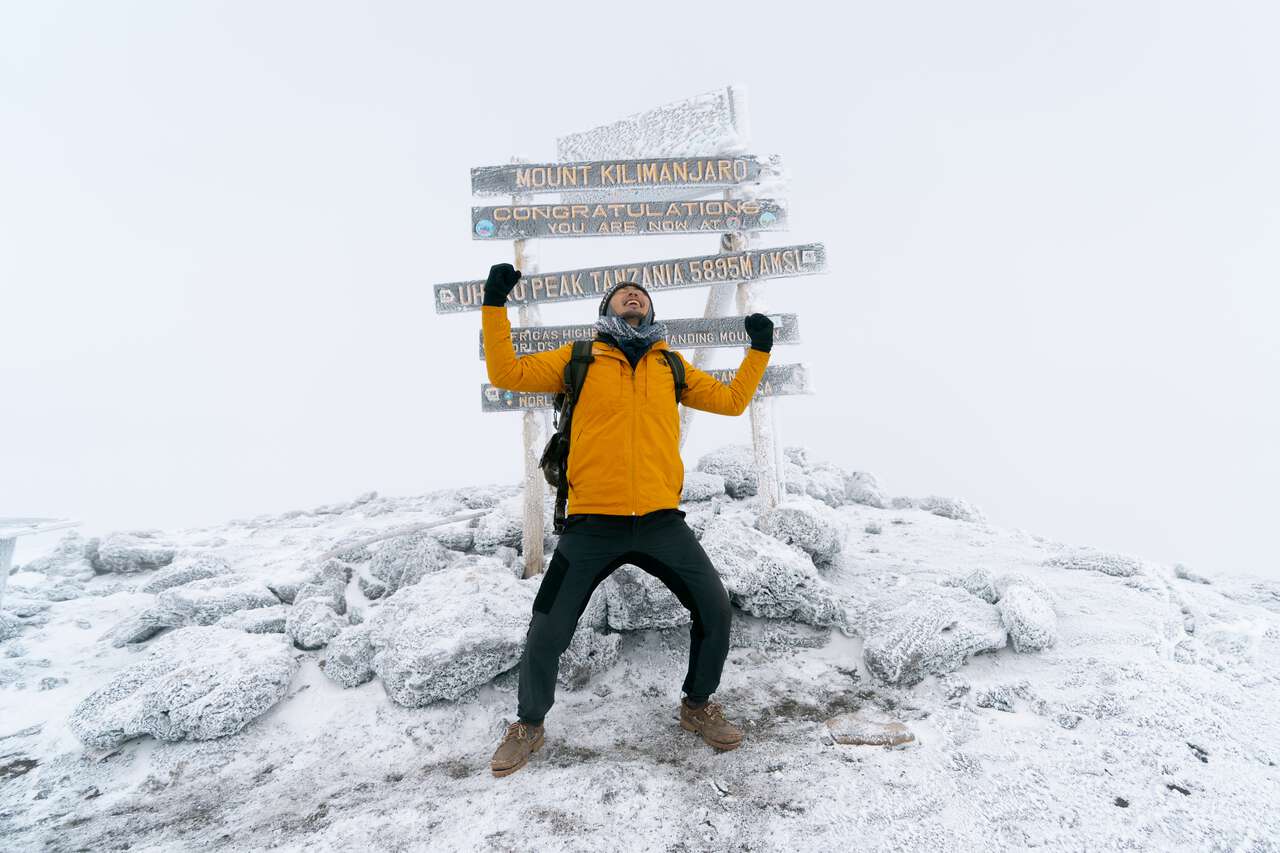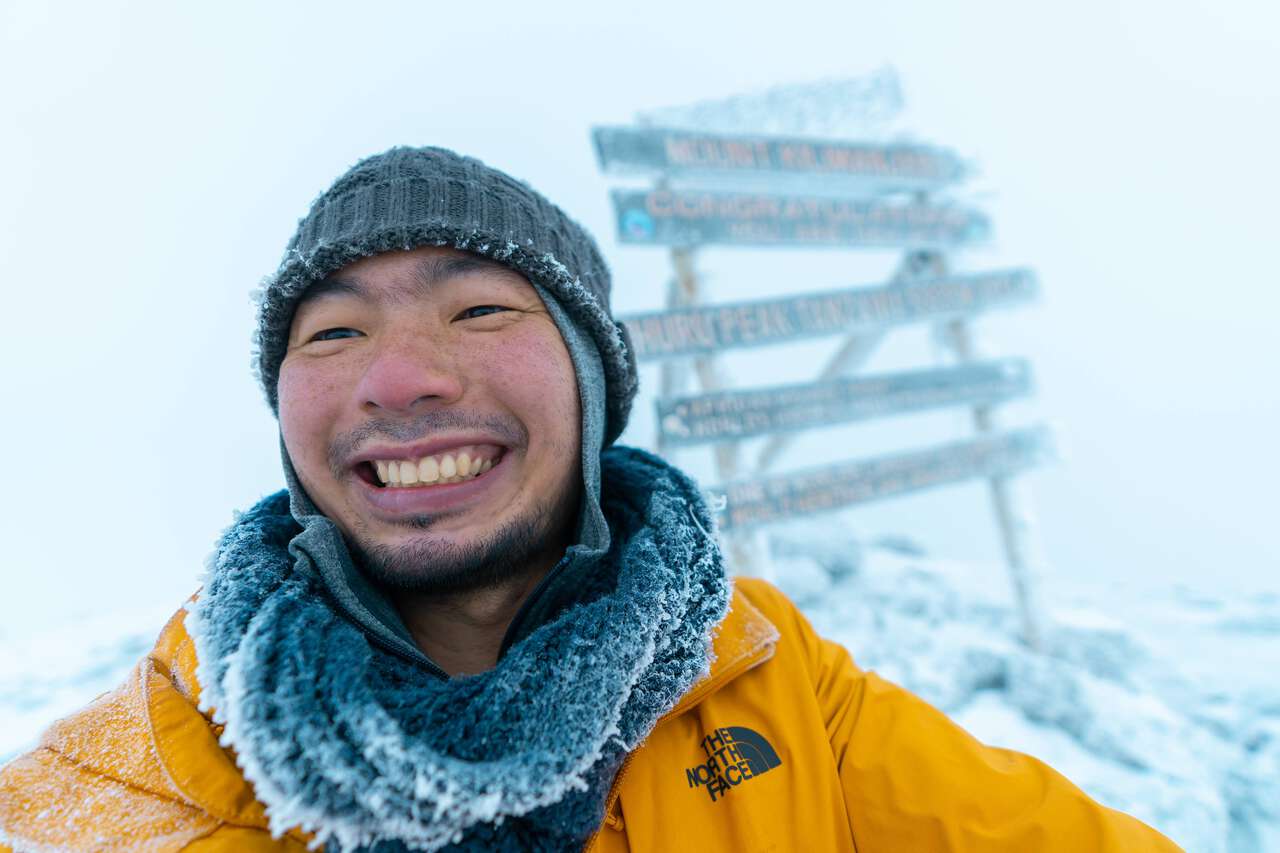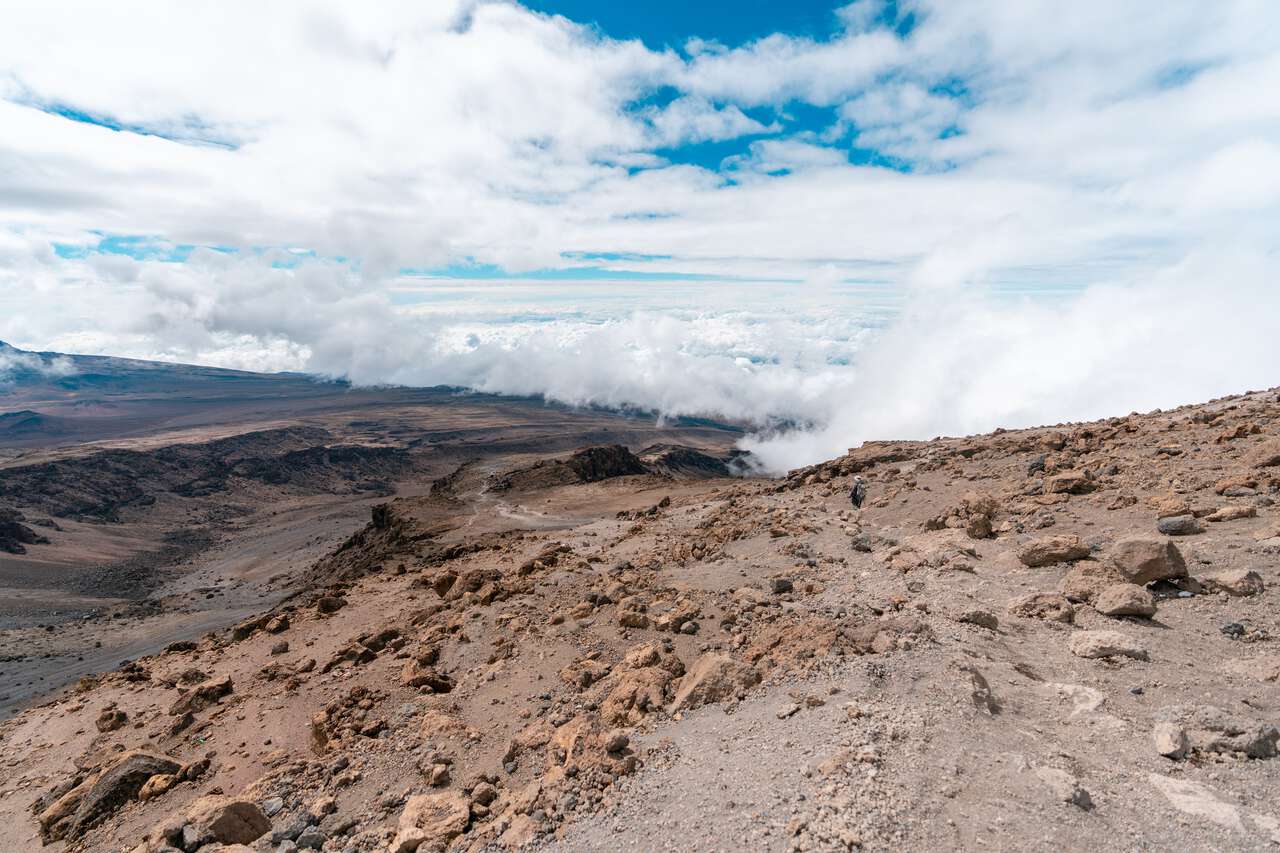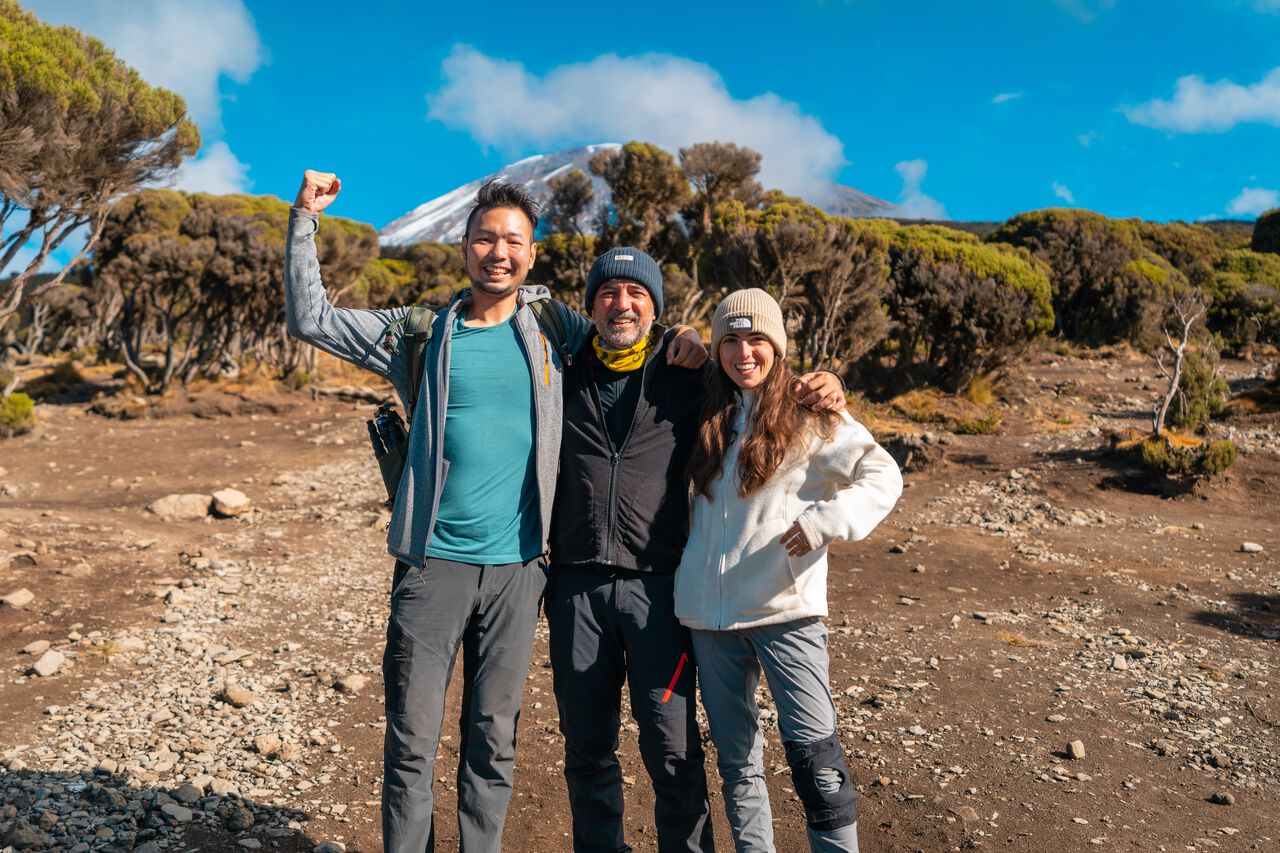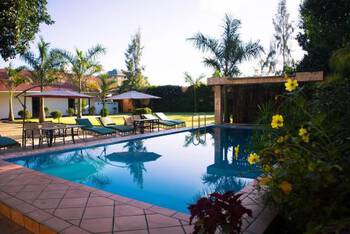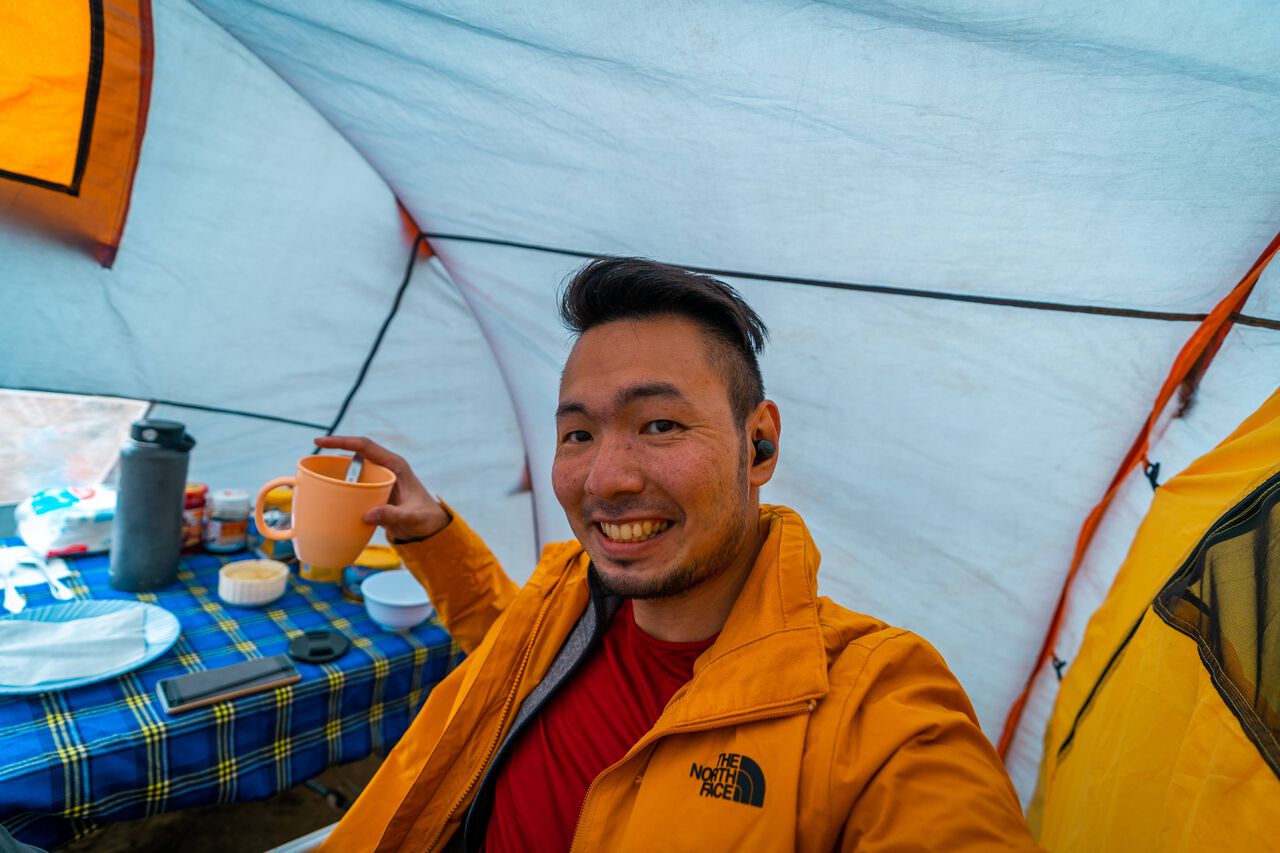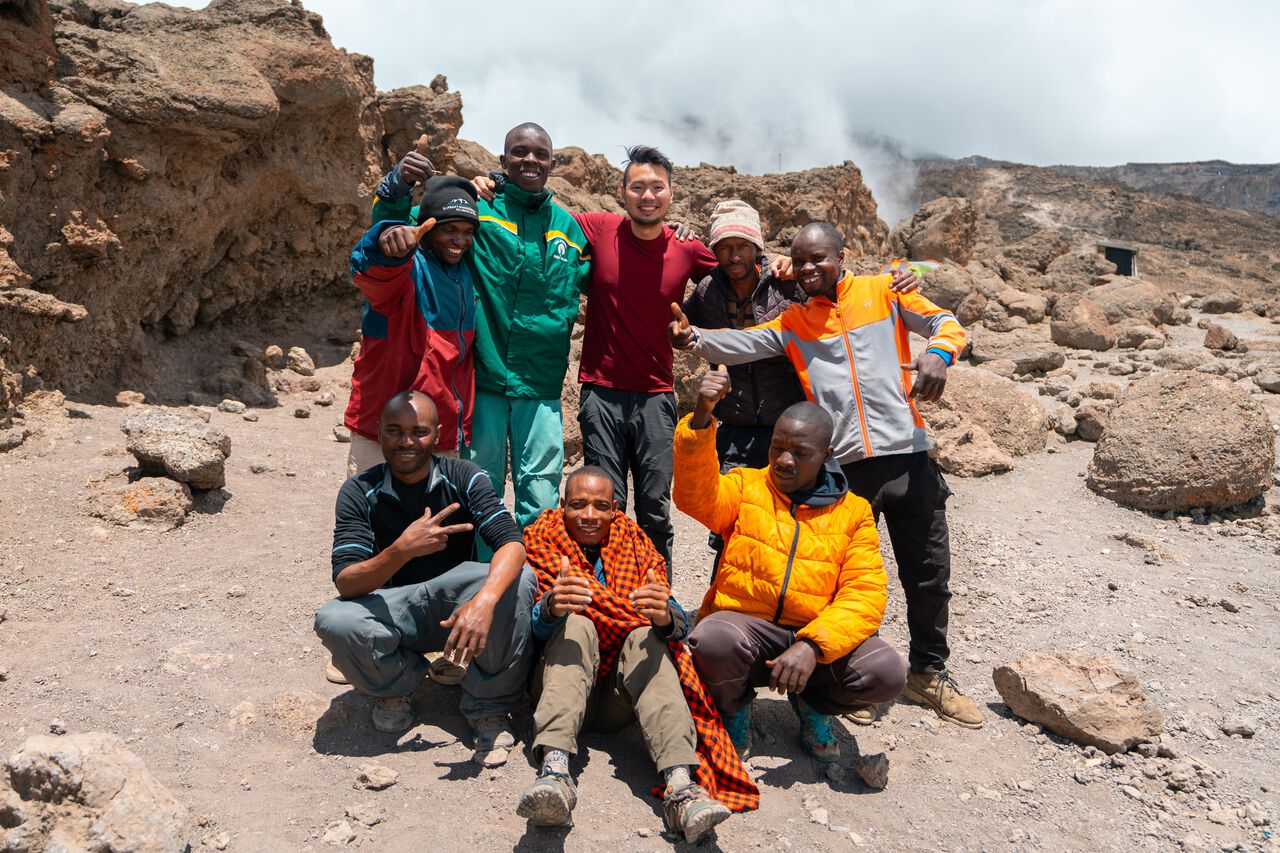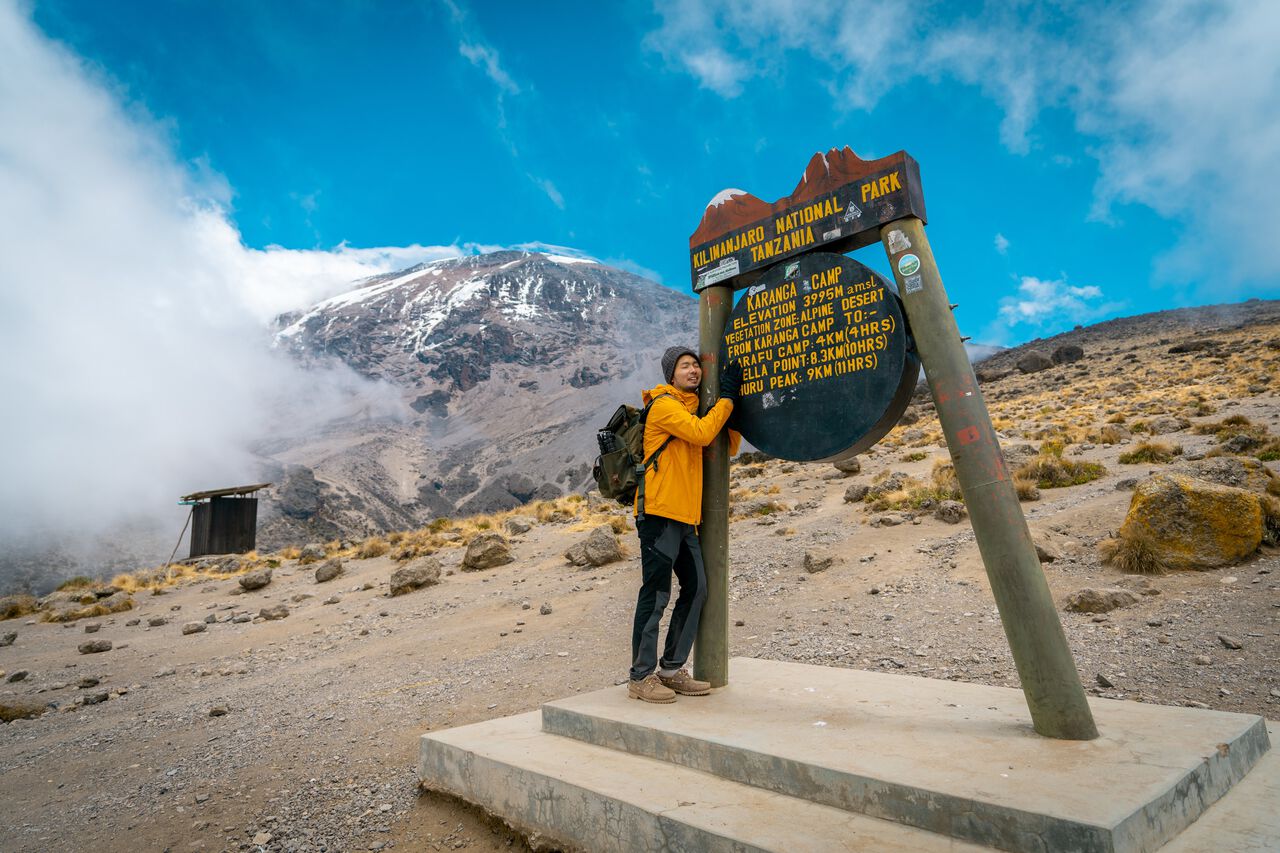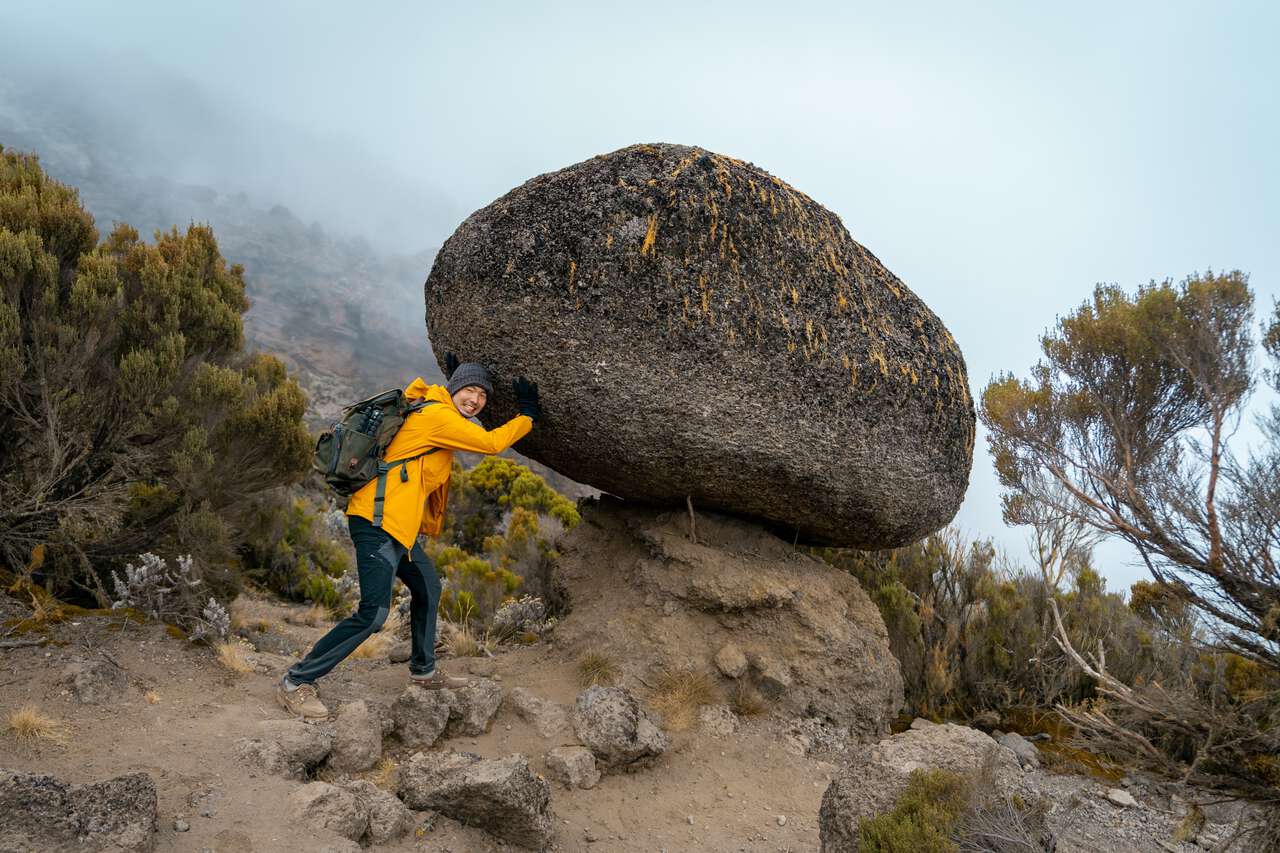Hiking Kilimanjaro, the highest mountain in Africa with its highest point at 5,895 m (19,340.5 ft) above sea level, is probably one of the hardest things I have ever done, and I've done quite a few intense hikes for many years before.
Considered to be the tallest standalone mountain in the world, Kilimanjaro may seem easy on paper, with the fastest route taking only 5 days to complete. However, what they don't tell you is its low success rate and the reason behind it.
Out of all the 8 trails you can climb on Kilimanjaro, the average success rate is only around 65%, with the 5-day Marangu Route being the lowest at only 27%. The reason behind this is its notorious acclimatization profile.
In order to be on the right side of that stat, extensive preparation is required, from the gear you pack to which route to pick, in order to maximize your success rate. You will find them all here in this hiking guide.
Within this guide, you will find all the information you need to plan a once-in-a-lifetime trip to the roof of Africa, right from the beginning all the way to the summit of Kilimanjaro. I am going to take you through each process carefully and help guide you all the way up to the top of Kilimanjaro.
Without further ado, here's a complete hiking guide to Kilimanjaro with a focus on the Machame Route, the best route to hike Kilimanjaro with the highest success rate. Let's first take a look at what the Machame trail looks like on the map below:
- Kilimanjaro Itinerary Map - Machame Route
- What is the Best Route to Climb Kilimanjaro?
- What to Pack for Kilimanjaro?
- 6 Days Kilimanjaro Hiking Itinerary
- Tanzania Travel Video
- Where to Stay in Arusha, Tanzania?
- When to Hike Kilimanjaro, Tanzania?
- How to Get to Kilimanjaro, Tanzania?
- How Long Does It Take To Climb Kilimanjaro?
- How Much Does It Cost to Climb Kilimanjaro?
- Which Kilimanjaro Tour Companies To Pick?
- Is Kilimanjaro Hard to Climb?
- Is it Safe to Hike Kilimanjaro?
- Which tourist SIM card is best for Kilimanjaro Hiking Trails?
- Further Reading for Tanzania
Kilimanjaro Itinerary Map - Machame Route
| 🌤️ Best time: | January-March, June-October |
| 🚘 Get around: | Trekking |
| 🕓 Time to spend: | 5-8 days |
| 🚶♂️ Difficulty: | Challenging |
| 💰 Cost: | 1300 - 3000+ USD |
What is the Best Route to Climb Kilimanjaro?
There are 8 hiking routes that you can take to get to the top of Kilimanjaro, all of which have varying beauty, difficulty, duration, and success rates. Your success could depend entirely on the hiking route you pick, so it is best to learn a bit about these routes before deciding.
Marangu Route: This is the shortest route out of all 8 routes on Kilimanjaro, with a minimum of only 5 days required. It's not the prettiest or the hardest in terms of trail difficulty, but it is the most popular due to its short duration.
This is the only route where you will be sleeping in mountain huts, other than camping like all the other routes. So, you would need fewer porters, which ultimately affects your Kilimanjaro tour prices, making it the cheapest option out of all.
No time to read?
Don't worry. You can save this page to Pinterest and come back later.
That said, the Marangu Route also has the lowest success rate out of all, at only 27%, due to a poor acclimatization profile, and I wouldn't recommend it unless you really have no choice.
Machame Route (Recommended): This is one of the prettiest routes you can take to reach the top of Kilimanjaro. The trail will take you through some of the most beautiful parts of the mountain, from forests to moorlands to volcanic deserts.
It has a great acclimatization profile with lots of nights staying at around 3000 m before summit day. The minimum number of days required is 6, but you can extend it to 7 to increase your success rate.
For this trail, you will be camping every day, and a lot more porters are required to carry your camping gear and food, which is why it is more expensive than the Marangu Trail. Still, I highly recommend you take this route over Marangu, as it has a higher success rate and you will enjoy the view more.
Lemosho Route: This is one of the newest routes to the top of Kilimanjaro. It is considered to be the prettiest trail out of all, with several opportunities for panoramic vistas from the side of the mountain.
It requires a minimum of 6 days, but many people go for 8 days to maximize their success rate. It also has lower traffic than the other trails, up until it merges with the Machame trail.
Out of all the trails, the Lemosho route strikes the best balance between beauty and traffic. It is a little more expensive; however, if you don't mind paying a premium for lower traffic, the Lemosho route is a great alternative to the Machame route.
Shira Route: This route is similar to the Lemosho Route, with the trail approaching Kilimanjaro from the west. However, it takes quite a few different routes before merging with the Machame Route. What makes this route a little different is its starting point.
On the Shira route, you start at 3,600 m, which can be quite disorienting for those who just came from a lower elevation. Thankfully, the elevation doesn't vary too much in the first few nights on the mountain, so you will have plenty of time to acclimatize, just in time for summit day.
Since it is so similar to the Lemosho Route but with more traffic, I would recommend you go with the Lemosho trail instead. Lemosho has a lower starting point and lower traffic overall, and the tour should cost about the same.
Umbwe Route: This is considered one of the most difficult routes with absolutely no acclimatization profile at all. The route takes 6 days, but it goes up quite steeply and in a short amount of time, which is not ideal.
This route is only recommended for those who are strong hikers and like to challenge themselves by taking the harder route up Kilimanjaro. The success rate is abysmal for this trail, so if you do not want to be on the wrong side of the stat, stick with the Machame or Lemosho Route.
Rongai Route: This is the only route that approaches the mountain from the north. The minimum days required are 6 days, and the sceneries along the trail don't vary as much as on other trails, which is why it isn't a popular pick.
Most people who choose this route are hikers attempting to summit Kilimanjaro during the rainy seasons, as the northern side of Kilimanjaro is known to receive less rain during that time. If you want to hike Kilimanjaro during the rainy seasons, this route is the way to go.
Northern Circuit Route: This is the newest route, and it is considered to have the highest success rate due to its length. The minimum number of days required to complete the Northern Circuit Route is around 9 days, with many nights spent at 4,000m to ensure proper acclimatization before summit day.
This route follows the same path as Lemosho in the beginning. However, instead of heading south towards the summit, the Northern Circuit takes the northern route along the side of Kilimanjaro. It then ascends the trail on the east to Uhuru Peak, unlike the other routes mentioned here that go south.
There are a lot of ups and downs, and it is quite long, which makes this route one of the most expensive. So, I would only recommend this route if you have done a fair share of hiking before and you like to take a less-traveled route up to the top of Africa.
Mweka Route: This route is only used for descending, and no one is allowed to hike up this way unless they are locals working for the rangers. The Machame, Umbwe, Shira, Northern Circuit, and Lemosho routes use this route for descending.
What to Pack for Kilimanjaro?
- Hiking Shoes: You are going to be hiking in these shoes for 5+ hours a day, so make sure you pack a pair of hiking shoes that you have already broken in for the hike. Also, you will be hiking in subzero temperatures on snowy terrain on your summit day, so make sure your hiking shoes are warm enough for it. I highly recommend you go with proper hiking boots or shoes like Timberland White Ledge Mid Waterproof Ankle Boot (for women) for good ankle support or these Columbia Redmond V2 Waterproof Hiking Boots (for women) if you want something lighter and easier to move around in.
- Thermal Shirts: This is the first base layer that will help wick your sweat out to be insulated by the second layer of your clothes when hiking Kilimanjaro. It is also great to wear in a tent at night.
- Fleece Jacket (for women): This is the second layer that you can wear on top of the thermal shirt. The fleece jacket will act as insulation to help maintain your body heat and keep you warm while you are hiking, as well as when you are in a mountain hut. I highly recommend you pack one or two of these for your Kilimanjaro hike.
- Waterproof Outer Shell Jacket (for women): For the third layer, on top of your fleece, you will need a waterproof outer shell jacket to protect you from elements such as rain and strong wind while keeping your body warm.
- Down Jacket: A down jacket is extremely important for the summit night as you will be going against extreme mountain wind, deep cold, and even snow, in subzero temperatures. You are going to need something thick that will keep you warm for 8 hours under those conditions. It is also great for when you are stationary in a tent at night. I highly recommend Columbia Men's Lone Fir Hooded Jacket (for women).
- Thermal Long Pants: You are going to need these for the summit day as you will be hiking in subzero temperatures for 6 hours before sunrise. They are also great for when it is extra cold in the tent at night. For women, leggings are perfect for this as you can wear them while hiking as well.
- Hiking Pants (for women): The pants you hike in have to be breathable, lightweight, and easy for you to move around in, so proper hiking pants are recommended. You can just pack one of these pants to keep your pack light or add another just in case.
- Sandals: Trust me, the last thing you would want to do after a long day of hiking in boots is to have to put them on while you are resting in your tent, so be sure to pack sandals with you as well.
- Wool Socks: When it is cold outside, your body heat will often escape from your extremities first, and the best material to prevent that from happening is wool. To keep your feet warm while hiking, I highly recommend you pack some wool socks to wear outside when you are hiking above 4,000 m (13,123 ft). This will be very important on summit night.
- Wool Gloves: Again, to keep your hands warm, get wool gloves to prevent heat from escaping from your peripherals while hiking when it's cold outside or at night in a tent.
- Wool Beanie: Your ears are also one of the places on your body that will easily get cold, so be sure to pack a wool beanie to warm your ears and protect them against strong winds while hiking.
- Neck Gaiter: A wool scarf is also recommended to help maintain your body heat in cold weather. With long pants, a wool beanie, socks, and gloves, the only area left where your body heat can escape is through your neck, so get a wool scarf and wear it when it's cold outside.
- Underwear: Thermal underwear for men (for women) and sports bras for women should keep you warm while allowing you to move freely when you hike in cold weather.
- A Large Backpack: This is where you will keep everything you do not need during the hike but you might need when at camp. Your porters will be carrying this bag, so make sure it is packed well and not too heavy. I highly recommend Osprey Atmos AG Backpack for men and Osprey Aura AG Backpack for women.
- A Daypack: This is what you will use to carry all your essentials like a water bottle, jackets, and snack bars, etc. Any backpack with around a 25L capacity, like Herschel Supply's Little America bag, should be enough for most use cases. However, if you have lots of camera gear like I do, the Langly Alpha Globetrotter Backpack is my go-to camera bag for the hike.
- Snack Bars: Snack bars are delicious, nutritious, cheap, and great for when you want to quickly replenish your energy while hiking. I highly recommend CLIF BARS, and be sure to pack a few with you for the hike.
- A Hydration Pack: I greatly prefer a hydration pack when hiking, as I can easily access the tube and stay hydrated quickly. This is especially important when hiking on high-altitude mountains like Kilimanjaro. Make sure to fill it up before starting the hike each day.
- Headlamps: You are going to need this to hike on your summit day, as well as when you want to navigate your way around your campsite at night. Make sure it is fully charged before your summit night, as you will be using it for 6 hours before sunrise.
- First-Aid Kit: Bandages (for blisters), painkillers, disinfectant wipes (the next best thing to showers), and tiger balm are always in the first-aid kit that I have with me when I go on a hiking trip. If you have personal medication, be sure to pack those too since you will be hiking for several days.
- Trekking Poles: I'm usually not a big fan of trekking poles, but maybe I am getting old because my knees hurt so much that I couldn't walk for days after I came down from Kilimanjaro. Trekking poles should help lift some burden off your knees when hiking Kilimanjaro.
- Power Bank: You won't have access to electricity for the entire length of your hike, so be sure to pack a large enough power bank to keep your cameras and phones juiced up for at least 6-7 days.
6 Days Kilimanjaro Hiking Itinerary
Day 1: Machame Gate to Machame Camp
Our journey to the top of the tallest mountain in Africa begins either in Arusha or Kilimanjaro. The tour company you are going with should brief you on the hike the day before, going through what you need and do not need up there, and they should pick you up at your hotel around 8 AM and drive to Machame Gate, the trailhead of Kilimanjaro's Machame route.
It is quite a long drive from Arusha/Moshi, so expect to be in the car for a few hours before you can actually hike. You should be at Machame Gate around 12 PM, where you will have a packed lunch while your guide and porters sort everything out for you at the national park office.
After having your lunch, it's time to hit the trail. The Machame route begins with a steady slope on a gravel road through a thick forest before the road turns into a proper hiking trail as it starts climbing up the mountain.
You will be hiking in a pretty well-shaded area with massive tree branches hovering above you for almost the entire length of your first-day hike. Since you are still around 2,000 m and hiking in the afternoon, there may be some light showers while you are on the trail, so make sure you pack a rain jacket in your daypack.
At Machame Gate, your elevation is about 1743 m, and you will be gaining more than 1,000 m of elevation on your first day on a steady slope that should take about 4-5 hours before arriving at Machame Camp (2,835 m), where you will be staying for the night.
By the time you arrive, your porters should have finished setting up your camp, where you can then wash up, get some quick snacks, and have dinner. At Machame Camp, the sky often clears up right before dusk, so be sure to check out the snowy peak of Kilimanjaro before you retreat for the night.
Right after dinner, your guide should come and brief you on what to expect for the next day's hike. You will be climbing more than 3,500 m until the last day, so be sure to pack enough layers for your hike.
Day 2: Machame Camp to Shira Cave Camp
Trek Time: 4-5 hours
Difficulty: Moderate to steep for 3 hours, then up and down.
Elevation: 3,750 m (12,300 ft)
Once you wake up, your chef will serve you breakfast before you begin your second day around 8 AM. Kilimanjaro is often clear during the morning and covered in clouds during the afternoon, so the earlier you start your trek, the more visibility you will get along the trail.
Your second-day hike begins with a steep climb through a moorland, where you will be able to see Mt. Meru, another impressive 4,566m high mountain across the skyline, as the trail becomes more exposed.
About an hour in, there will be a resting point where you will be able to spend some time enjoying the panoramic vistas surrounding Kilimanjaro, with its peak looming behind you.
After the resting point, it is another 2 hours of steep climbing through a moorland before the trail plateaus. Then, you will be walking up and down for about an hour before reaching your second camp, Shira Cave Camp.
If you start early enough, you should arrive at Shira Cave Camp around 12 PM, where you will have lunch. Then, you can rest for a few hours before going on another round-trip side hike for acclimatization.
At around 4 PM, you will have to go on an acclimatization hike to a sister campsite nearby called Shira Camp 2. The hike is a simple up and down the trail across a plateau that takes about 1.5 hours roundtrip, and you will be able to see why they call your second night camp Shira Cave Camp.
You guessed it! They called the camp Shira Cave Camp because there are many caves around the area. Back then, people used to spend the night inside these caves. However, one of them collapsed, and now, the government has prohibited anyone from spending the night in them.
Shira Camp 2 is nothing special, in my opinion. It's pretty much the same as Shira Cave Camp, with a slightly different view. However, it is important to keep your body moving up at that elevation to help your body acclimatize to the altitude.
After an hour and a half, you should be back at Shira Cave Camp in time for your dinner. If the sky opens up at night, I highly recommend you come out of the tent and look up at the sky. You might be lucky, as I did, and see the Milky Way hovering over Moshi city down below.
Shira Cave Camp is situated more than 3,750 m above sea level, and you will start to feel the effects of high altitude. So, be sure to stay hydrated at all times from now on and prepare for cold nights ahead.
Day 3: Shira Cave Camp to Lava Tower to Barranco Camp
Trek Time: 6 hours
Difficulty: Moderate - Steep up to Lava Tower then All Down
Elevation: Lava Tower: 4,630 m (15,190 ft), Barranco Camp: 3,900 m (12,795 ft)
After having a good night's sleep, it's time to wake up and have breakfast. The viewpoint over Moshi from Shira Cave Camp is quite a sight to behold, so if you have the energy, be sure to come out and check out the view at sunrise.
Today is another six-hour hiking day, but you are no longer protected by trees like the previous day. After Shira Cave Camp, the trail becomes fully exposed as it enters the volcanic desert area.
The hike begins with a steady climb with lots of ups and downs. The trail isn't steep at any point, but it is a long winding trail that continues for more than 4.5 hours until you arrive at Lava Tower Camp, a mountain pass situated around 4,630 m (15,190 ft) above sea level.
This giant lava rock is a reminder of how active the area once was when Kilimanjaro erupted more than 200,000 years ago. Imagine seeing this chunk of lava rock flying across the sky before it plopped itself right in front of you.
Many people opt to have lunch here, but since it is only an hour before we arrive at Barranco Camp where we will spend our third night, I told my guide to push through and have lunch there instead.
From the Lava Tower, the trail goes down quite steeply for about 20 minutes before it continues to descend gradually, passing through some truly alien-looking landscapes.
You will find yourself surrounded by the stunning Giant Groundsels, a prehistoric plant straight out of Jurassic Park. This is my first time seeing the Giant Groundsels, and I couldn't stop taking photos of them.
They look so alien, so out of place, so prehistoric, it's hard to believe they still exist to this day. There are many waterfalls around this area, and the plants love to grow around water sources. Therefore, you will find a ton of them here.
After being bewildered by this beautiful plant, you should arrive at Barranco Camp in about an hour where you can then enjoy a little rest time before having dinner and resting up for the next day. Trust me, you are going to need that rest.
Day 4: Barranco Camp to Karanga camp to Barafu Camp
Trek Time: 6 - 7 hours
Difficulty: Moderate to Difficult - Extremely steep climb for 1 hour, moderate hike for 5 hours
Elevation: Karanga Camp: 3,995 m (13,107 ft), Barafu Camp: 4,673 m (15,331 ft)
On our fourth day on Kilimanjaro, we will begin by tackling one of the most feared parts of the entire trek: the Barranco Wall. The Barranco Wall is a terrifying-looking steep cliff that goes straight up about 257 m, where you are going to have to climb first thing in the morning.
To be honest, the trail up Barranco Wall isn't as terrifying or difficult as most people made it out to be. It is narrow but not narrow enough to be dangerous. It looks difficult and steep, but in reality, it only takes about an hour to climb all the way to the top.
There might be a traffic jam in the morning where you will have to wait for people to scramble up the trail, but other than that, you should have no trouble climbing Barranco Wall.
What is so special about the wall is not the wall itself, but when you get up to the top and see the entirety of Kilimanjaro towering over you for the first time. Now, that was quite a sight to behold.
Spend some time and take photos with Mount Kilimanjaro (get creative) before you continue on the trail to Karanga Camp. This part of the trail takes about 3 hours with moderate difficulty. Usually, if you are doing the Machame Route, this is where you will spend your fifth night. However, for those who are doing the 6-day itinerary, you will have lunch here before you continue to Barafu Camp.
From Karanga Camp, it takes about 3-4 hours to get to Barafu Camp, which is the final camp before the infamous summit day. The trail between the two camps is pretty straightforward, with steady ups and downs, but it is quite long and you will probably be out of breath by the time you arrive at Barafu Camp.
Barafu Camp stands at more than 4,670 m above sea level, and the effect of high altitude will become much more apparent here than at any other camps you have been to. The wind is also constantly blowing against the campsite, so be ready for a cold night.
Not just that. Since the next day is summit day, you will have to go to bed as early as 7 PM and wake up at 12 AM to begin your final ascent. Twelve hours of hiking are ahead of you, and you are allowed to sleep only 5 hours (if you are lucky).
So once you arrive at Barafu Camp, make yourself as comfortable as you can, have dinner, and go to bed straight away to replenish your energy. Trust me, you are going to need all the energy you can get for the next day.
Before going to bed, your guide will come and brief you for the final push, and you will have to prepare everything before you sleep as you won't have time to do so in the morning.
Tip: Charge all of your electronics and make sure to keep them near your body while you hike the next day to retain battery life. Pack all of the layers you have: fleece, down jackets, outer shell jackets, thermal clothing, down pants, gloves, beanies, scarves, etc.
Day 5: Barafu Camp to Uhuru Peak to High Camp
Trek Time: 12 hours
Difficulty: Difficult
Elevation: Uhuru Peak: 5,895 m (19,340.5 ft), High Camp: 3,950 m (12,959 ft)
At 12 AM, you will be ushered out for a small light breakfast (a pack of peanuts, popcorn, and a cup of coffee), and your ascent to the top of Kilimanjaro begins.
It is an extremely long hike that will take you up a moderate slope through the night at subzero temperatures while constantly being bombarded by gusts and winds from all directions. Everything becomes a chore the moment you are above 5,000 m, and that is when you will feel like you want to give up the most.
Don't give up. You are already more than halfway there. Take it slowly and focus on your feet instead of the destination, and continue to keep yourself warm and hydrated as much as you can.
Keep pushing, and in no time, you should reach a plateau where you will be met with a wooden sign welcoming you to Stellar Point (5,756 m), one last point of interest before you arrive at the highest point of Kilimanjaro. Congratulations, you have arrived at Stellar Point.
From Stellar Point, it is another hour hike along a rather simple trail before arriving at Uhuru Peak, standing at a whopping 5,895 m above sea level. Congratulations, you have arrived at the top of Kilimanjaro, the goal you have been working towards for more than 5 days.
At the top, you should see the famous Kilimanjaro sign indicating where you are and how high you have climbed. Take as many photos as you want. You deserve this!
After spending time at the top of Kilimanjaro, it will take about 3 hours to get down to Barafu Camp. Your guide should take you on a shortcut route where you can run down, cutting the usual hiking time in half.
After arriving back at Barafu Camp, you will have some time to rest before you have to continue for another 4 hours before you arrive at High Camp where you will be spending the night. Trust me, you are going to appreciate the vegetation and the lower altitude at High Camp (3,950 m) rather than spending another night up at Barafu Camp.
Day 6: High Camp to Mweka Gate
Trek Time: 4-5 hours
Difficulty: Easy
Elevation: Mweka Camp: 3,110m (10,203 ft), Mweka Gate: 1,653m (5,423 ft)
After a good night's sleep at High Camp, you will have the morning to enjoy your breakfast and appreciate what you have just accomplished, with a final view of the peak of Kilimanjaro looming behind.
After breakfast, you will then have to start hiking down to Mweka Camp. It takes about one hour to get to Mweka Camp and another three hours to get to Mweka Gate, where you will receive your certificate congratulating you for reaching both Stellar Point and Uhuru Peak.
After receiving the certificate, you will have lunch at the gate before your driver transfers you back to Arusha or Moshi where you can take a nice warm shower and rest on a comfortable bed for the first time in 6 days. Congratulations, you can finally say you have successfully climbed Kilimanjaro.
Where to Stay in Arusha, Tanzania?
When to Hike Kilimanjaro, Tanzania?
The best time to climb Kilimanjaro is between January to March and June to October when it is the driest. During these months, you will have a much higher chance of experiencing clear skies, high visibility, and lovely sunshine. These conditions make your hike much more comfortable, and believe me, you will need all the comfort you can get up there.
Technically, you can hike Kilimanjaro any month of the year, but some are harder than others. The top of Kilimanjaro is covered in snow almost all year round, so if you do not want to hike in thick snow, I would recommend you stick to the recommended period.
Be warned, though. The locals like to call Kilimanjaro a chameleon due to how fast the weather changes. Even in the driest months, you might encounter unfavorable weather like heavy rain and snow while you are hiking. So please keep that in mind when you are packing for Kilimanjaro.
You might also encounter a lot of climbers during the peak seasons, so if you want to avoid the crowds and don't mind hiking in short rains, late October and November are also great for Kilimanjaro. Don't worry, I hiked in late October and it only rained sporadically, and I was able to hike just fine without having to wear a raincoat.
How to Get to Kilimanjaro, Tanzania?
The closest town to Kilimanjaro is Moshi, and the nearest airport is Kilimanjaro International Airport (JRO), which is a popular travel hub for those who are visiting Serengeti and Kilimanjaro, so you should have no trouble finding a flight here.
From the US, there are a few airlines connecting big US cities to Kilimanjaro Airport with only one transit, such as Ethiopia Airlines, Qatar, Swiss, and Kenya Airways, that you can book with.
From Europe, KLM has a direct flight from Amsterdam to Kilimanjaro Airport, which takes about 8 hours. Alternatively, you can fly from other big cities in Europe like London or Frankfurt via Qatar, KLM, or Kenya Airways, with one transit in Doha, Amsterdam, and Nairobi respectively.
From Asia, the fastest way to get to Kilimanjaro is to fly from any big city in Asia to Kilimanjaro Airport via Qatar, where you will only have to transit once in Doha. The journey should take no more than 17 hours.
From Africa, you can get to Kilimanjaro by flying to Kilimanjaro Airport via airlines like Kenya Airways and Ethiopian Airlines, which operate a direct route from their headquarters city directly to Kilimanjaro Airport.
To find a cheap flight to Tanzania, I would recommend that you use Skyscanner or Expedia to look for the cheapest route and schedule, so you can compare and pick the best one.
How Long Does It Take To Climb Kilimanjaro?
As mentioned in the previous section, the duration of your Kilimanjaro climb will depend on the route you choose. The shortest route is the Marangu Route, which requires only 5 days to complete, whereas the longest is the Northern Circuit, which requires around 9 days to complete.
All in all, it takes between 5 - 10 days to climb Kilimanjaro, with the Marangu Route taking a minimum of 5 days, Machame, Lemosho, Shira, Umbwe, and Rongai taking a minimum of 6 days, and the Northern Circuit taking a minimum of 9 days.
Keep in mind that the shorter the hike, the lower the success rate due to poor acclimatization profile. Kilimanjaro doesn't have the best success rate, and if you want to maximize yours, I highly recommend you choose either the Machame, Lemosho, or Shira routes and spare at least 6-7 days for the hike.
How Much Does It Cost to Climb Kilimanjaro?
The cost to climb Kilimanjaro varies between 1,300 USD all the way to 3,000+ USD, depending on the route, the duration, and how luxurious you want your camp to be.
The cheapest price you can get for a tour to climb Kilimanjaro is 1,300 USD, and it is for a 5-day Marangu Route budget tour where you will be taking the fastest route with the lowest success rate and staying in mountain huts instead of camping.
The most expensive tour you can get is an 11-day Northern Circuit Route, which can cost more than 3,000 USD. Personally, I think 5 days is way too short, and 11 days is too long for Kilimanjaro.
For the best of both worlds, I highly recommend you set your budget to around $1,800 USD and choose between the Machame or Lemosho routes with a minimum duration of 6-7 days depending on your fitness. A 6-day Machame Route tour is the best option for those who have hiked in high-altitude mountains before, and a 7-day tour is great for beginners.
Whichever tour you pick, you will be treated very well up there. We had a huge tent with a front porch where we were always served freshly cooked food after every hike. Snacks, water, and whatever you need to succeed on Kilimanjaro, the guide and porters will have them.
It is probably the most luxurious hiking/camping trip I have ever done in my life, thanks to the porters and my guide for making it so comfortable to climb such a treacherous mountain. For more Kilimanjaro tour options, you can click on the link below:
Which Kilimanjaro Tour Companies To Pick?
Most Kilimanjaro tour companies are great, and they often provide a similar level of comfort for their clients, with a 4-season tent, freshly cooked food, and a guide who will try their best to get you to the top and down safely.
The tour price and what you get also doesn't vary as much between each other unless you are going for the most luxurious hiking trip ever, which, in my opinion, doesn't equate much as the resources in the mountains and what the porters can carry (limited by law) are pretty limited.
I found a very good tour company via SafariBookings, and they helped me organize the entire excursion professionally. The tour company responded to my requests very quickly and helped organize everything despite several changes in my plan.
Issa, my hiking guide, was also great. Although he is a little rough around the edges, which is to be expected in Tanzania, and since his main goal was to help me succeed in my goal to climb Kilimanjaro, a little roughness here and there goes a long way.
I paid around 1500 USD for a 6-day Kilimanjaro climb on Machame Route in October 2021, which I think is reasonable. For the service you receive, from the porters and guides, how they treat you, and how they go out of their way to make the feat as convenient as possible, I think it was worth it.
I had a great time in Kilimanjaro with them, and if you are looking to have a similar experience as I did, try browsing through SafariBookings. Find the best tour companies within your budget and start planning your trip to the top of Africa.
Is Kilimanjaro Hard to Climb?
Some people said climbing Kilimanjaro is one of the most challenging things they have ever done, and I have to agree. The hike overall was not super difficult. It is the summit day that is the most challenging, both mentally and physically, and that is coming from me, who has done quite a few long treks before attempting Kilimanjaro, including the 15-day Everest Base Camp hike.
You see, for the Kilimanjaro summit day, you have to wake up at midnight and start hiking for about 6-8 hours to reach the summit by sunrise. Although the climb is gradual, the higher you go, the less air you have, which makes it more and more difficult to climb as the night goes on.
The worst part of the summit day is the constant strong wind and the temperature drop at night, which made the long push so torturous. If you have camped in the high-altitude mountains before, you know how cold it is to be out of your tent at night. Imagine hiking in that cold for 6-8 hours.
It took me 6 hours to reach Uhuru Peak, the highest point of Kilimanjaro. I was completely battered. My nose was dripping, my throat dried up, and my lips, hands, and feet all swollen into shapes I do not recognize.
And it's not just that. You still have to walk down from the summit to High Camp the same day, which takes another 5 hours to reach. It is a 12-hour day hike, and when you combine that with the altitude of 5,000+ m, which makes breathing seem like a chore, you will have one hell of a demanding day.
Other than the summit day, the Kilimanjaro hike difficulty is pretty moderate with lots of ups and downs to help you acclimatize (if you choose the Machame or Lemosho routes) before the big summit day.
Again, the difficulty of Kilimanjaro will mostly depend on the route and duration you choose, especially when it comes to a high elevation trek like Kilimanjaro. To make the hike less difficult, opt for popular routes like Machame and Lemosho, and choose either the 6 or 7-day itinerary. You will have a higher success rate with these two routes.
Is it Safe to Hike Kilimanjaro?
Kilimanjaro is a pretty well-trodden mountain, and it is considered quite safe trail-wise, with well-constructed paths wide enough to accommodate the traffic (except the way up Barraco Wall). You won't be encountering any complex obstacles that require technical skills to get past.
What makes Kilimanjaro so dangerous is the altitude. Some of the routes up Kilimanjaro aren't known for their good acclimatization profile. Many of them start around 1700 m above sea level, and you will be going up to almost 3,000 m on the first day and 4,000 m on the second day. That is a lot of elevation gain in 2 days, and you can run into trouble if you aren't careful.
Acclimatization is extremely important when it comes to alpine hiking. The higher the elevation, the less oxygen you have access to, and if one isn't careful, a slew of life-threatening conditions can appear while hiking, such as acute mountain sickness (AMS) or, worse, high altitude pulmonary edema (HAPE) or high altitude cerebral edema (HACE), which can be extremely lethal.
That is why Kilimanjaro has such a poor success rate for being such a commercialized mountain. I saw many people turning back on the summit day due to high altitude, and some were even carried down on a stretcher by their guides.
Altitude sickness is no joke on Kilimanjaro, and you have to try your best to avoid it whenever you can. The key to avoiding it is to drink lots of water even at night, regulate your body properly, and take it slow when hiking. Try to make your tent as comfortable as you can when you are sleeping. The last thing you need on a 12-hour hiking day is a restless night.
Keep these in mind when you are hiking Kilimanjaro, and you should have no serious trouble up there. Other than the risk of altitude sickness, there isn't much to worry about when hiking Kilimanjaro.
Which tourist SIM card is best for Kilimanjaro Hiking Trails?
Update: If your phone supports eSIM, I highly recommend checking out Airalo, a global eSIM marketplace. It allows you to stay connected affordably while traveling in Kilimanjaro, Tanzania without having to switch out your physical SIM card.
Gone are the days when you needed to scramble to find a local SIM card at an airport upon arrival. You can purchase an eSIM before your arrival, and you'll be good to go. If your phone doesn't support eSIM, here is how you can get a local SIM card in Kilimanjaro, Tanzania:
Since Kilimanjaro is such a massive standalone mountain, you will be able to get some mobile signals along the trail or even at many campgrounds, which is great if you want to let other people know how you are doing on the trail. However, do not expect the internet to be very fast.
I personally used Vodacom, bought from an official Vodacom shop between Terminal 2 and 3 at Dar Es Salaam Airport, and was able to get signals at many of the camps along the Machame Route, but only when it is clear outside. If you want to keep in contact with loved ones while you are hiking, I highly recommend going with Vodacom.
There are many data bundles you can choose from, ranging from 500 MB for 7 days at 3000 TZS to 50 GB for 30 days at 95,000 TZS. I bought a 10 GB for 30 days at 35,000 TZS (15 USD), and I still had plenty of data left after 20 days in Tanzania.
For more information about Tanzania's local SIM card: Tanzania's Prepaid Data SIM Card.
That is it for A Complete Hiking Guide to Kilimanjaro. Have we missed anything? Have you found the guide useful? Let us know in the comments below!
Now that we have all the information we need, it's time to plan your trip to Kilimanjaro, Tanzania! Here are some resources to help you get your trip going:
Are you planning to travel to Kilimanjaro, Tanzania independently? Be sure to check out my guide on How To Plan A Backpacking Trip here.
Tips: To stay connected with people at home, be sure that you have a VPN, such as ProtonVPN, installed before traveling. It's FREE, and you can gain access to services that may be blocked in certain countries.
Further Reading for Tanzania
I have plenty of articles to help you further with your trip planning for Tanzania. Here is a selection of articles that you might find useful:
- Planning to visit Tanzania for the first time? Here are the 10 best things to do in Tanzania.
- Looking for a complete itinerary for Tanzania? Here is a 10-day to 2-week backpacking itinerary for Tanzania.
- If you plan to hike Kilimanjaro, you are going to have to know what to pack and what not to. Here's The Ultimate Packing List for the Kilimanjaro Hike.
- Serengeti is probably the best place in the world to go on a safari, and it is a must-do if you are in Tanzania. To start planning a safari trip to Serengeti, check out: A Complete Safari Guide To Serengeti, Tanzania.
- Zanzibar is one of the most popular island destinations in Africa, and to really do the place justice, you need a complete travel guide to help plan the best trip of your life. Here are the 10 Best Things To Do In Zanzibar and a complete travel guide to the pearl of the African Indian Ocean.
- Stone Town is a historical town full of rich history and cultures, and it is a place you shouldn't miss when you are traveling to Zanzibar. Here are the 10 Best Things To Do In Stone Town, Zanzibar.
- To truly make the most out of your trip to Zanzibar, you have to rent a car and drive to all the hidden gems on the island. Here is 8 Important Things to Know Before Renting A Car in Zanzibar.
- To see all articles about Tanzania, visit the Tanzania Travel Guide page.
- If you are planning an East Africa backpacking trip, make sure to check out all our East Africa Travel Guides.
- Looking for more travel guides for Africa? You can find more on my Africa Travel Guide page.
- For more of my travel guides, visit my Destinations page.

